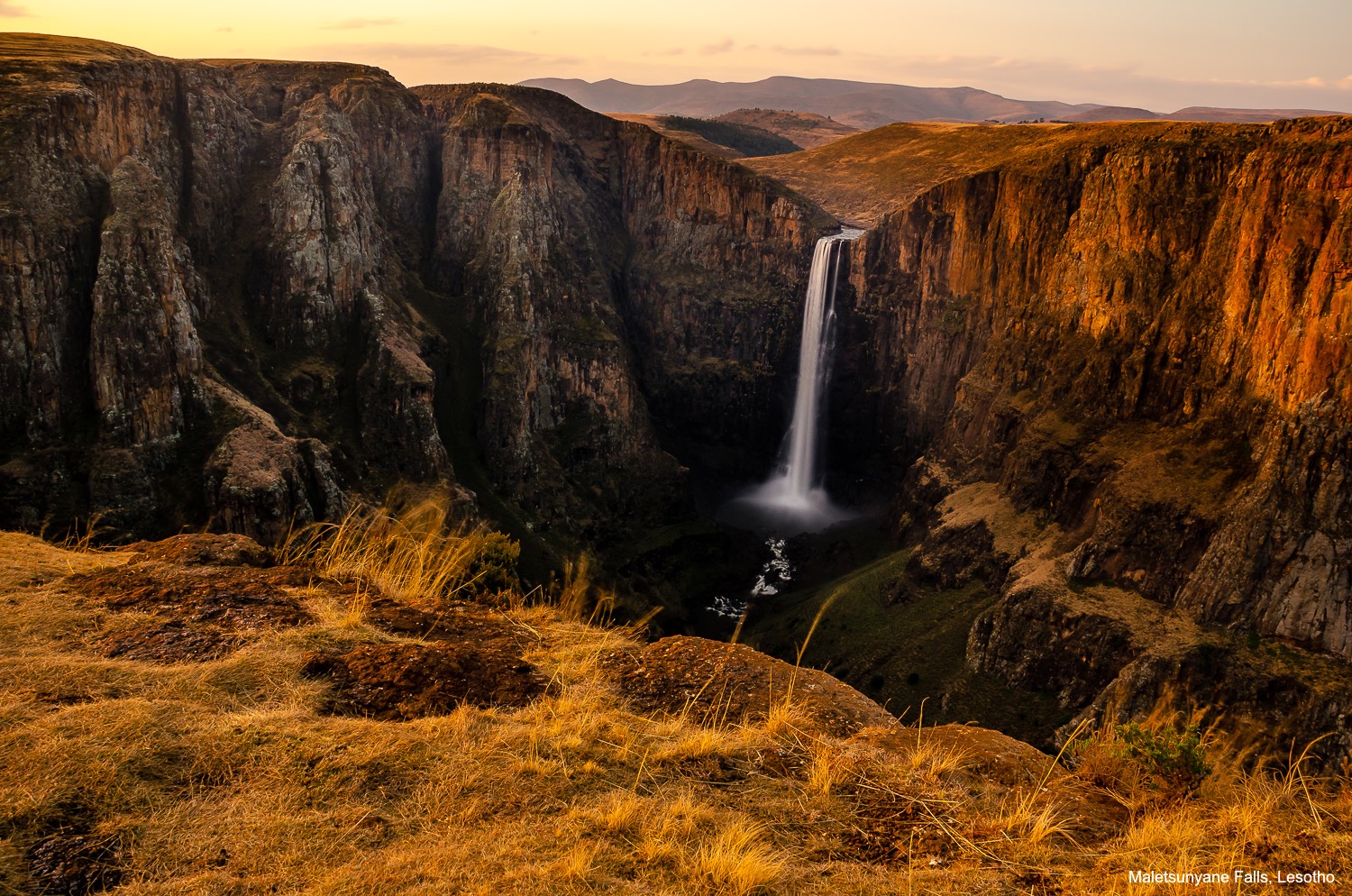The southeast tip of Africa is an amazing place for multiethnic cultures and geographical peculiarities. Lesotho is one of only three countries surrounded by another, in this case South Africa. Eswatini (formerly Swaziland) is one of only seven countries surrounded by two countries (Mozambique and South Africa). Durban has over one million ethnic-Indians, making it one of the largest concentrations outside of India for a city. Clarens is an artist haven named after a village in Switzerland.
The region is full of alluring geological features. Lesotho’s lowest elevation is the highest for any country. Diminutive Eswatini has all the landscape features of Africa except desert and sea. Durban’s Golden Mile is a long stretch of wide beaches with soft sand on the Indian Ocean. Clarens is in the foothills of the Maluti Mountains in the Free State province of South Africa.
This post is the second part of our South African road trip starting from Johannesburg in July 2022. See South African Road Trip – Part 1: Johannesburg, Soweto, Kruger and Maputo for more information, some pertaining to the destinations in this post.
Where are Eswatini and Lesotho?
Here’s a map of where we went on the entire road trip.
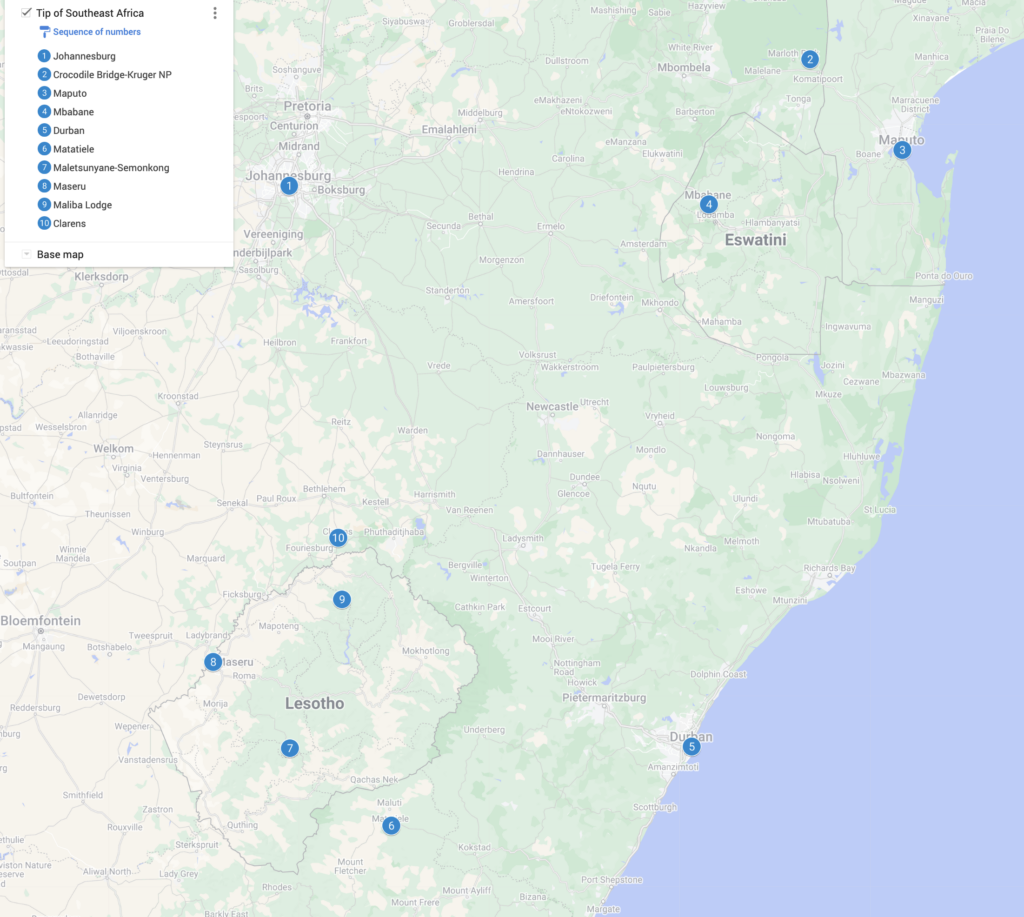
Both countries are landlocked, but there are roads to enter them from all directions. You need to stop at immigration and pay certain fees, but there’s very little risk you would be stopped from entering.
What Languages Are Spoken in Eswatini, Lesotho and South Africa?
The native languages of Eswatini include Swazi and English and we had little trouble communicating in the latter.
The official languages of Lesotho are Sesotho and English, but we found many did not know the latter.
We had no problem in South Africa speaking only English.
Are Eswatini, Lesotho and South Africa Safe?
We had no issues with safety except for potentially having a car breakdown in an undesirable spot, as there are scattered bad roads, particularly in Lesotho.
As with all big South African cities, there are constant warnings by Durban locals to be careful and avoid walking on your own. It’s difficult to know if all the fuss is warranted or somewhat overblown. Clarens is very safe, and I walked with my camera everywhere.
Are Eswatini, Lesotho and South Africa Expensive?
We didn’t find these countries particularly expensive. Mbabane, Eswatini, has a decent selection of reasonable hotels and Durban has many at all price ranges. Lesotho has relatively few lodges tourists would like, so they charge a premium for them. Clarens, a popular South African destination, has many affordable hotels considering how small it is.
Entering Eswatini from Mozambique
About 30 km / 18 miles from the Goba crossing at the Eswatini border, our cheap Toyota Starlet had some of the plastic undercarriage come off, and then the passenger-side, front-tire ripped. This was a rural area without a lot of traffic. It was surprising this happened as we stuck to national highways and did not go on 4WD roads.
The jack was worthless, the worst I’d seen in my life. We flagged down an open-bed cargo truck and these three gents jumped out to help. Luckily, they could use their jack under the axle to raise our car. Eventually, they replaced the tire with an undersized, yellow-rimmed spare.
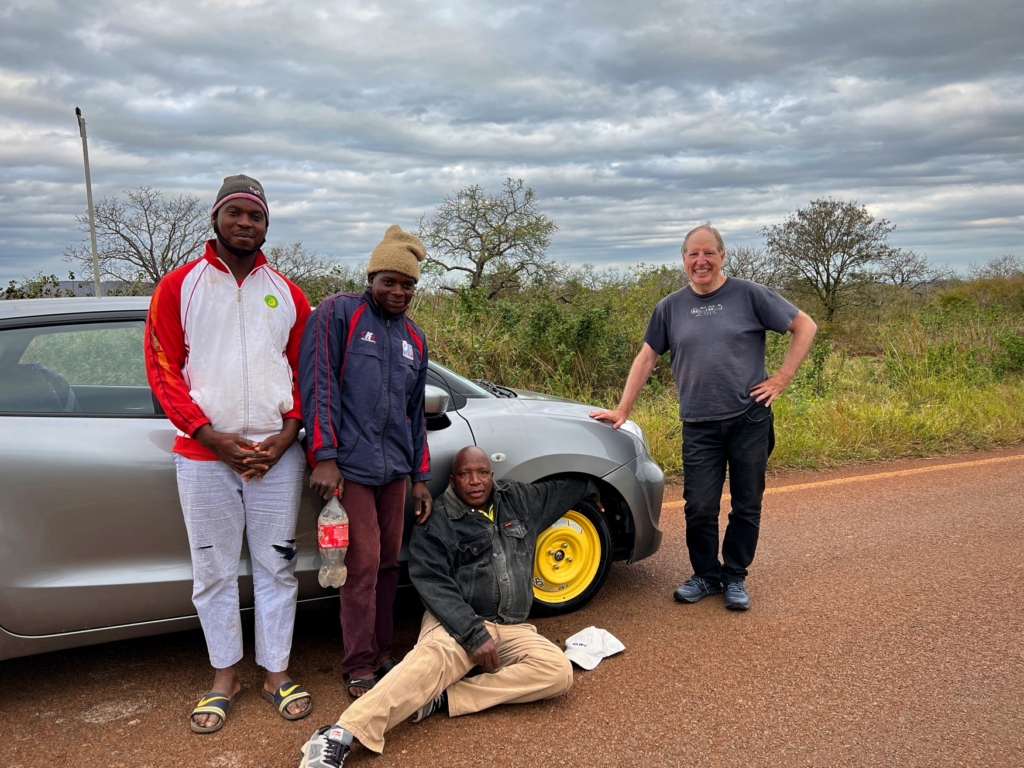
This was just one more time, out of so many, local people came to our assistance while we were traveling over the years.
Mbabane, Eswatini
Mbabane (uhm-bah-bah-nee) is the capital of Eswatini and sits in a valley ringed by the Dlangeni Hills. It’s Eswatini’s largest city with a population of around 100,000.
Fixing the Car
The tire we replaced was not flat but ripped off.
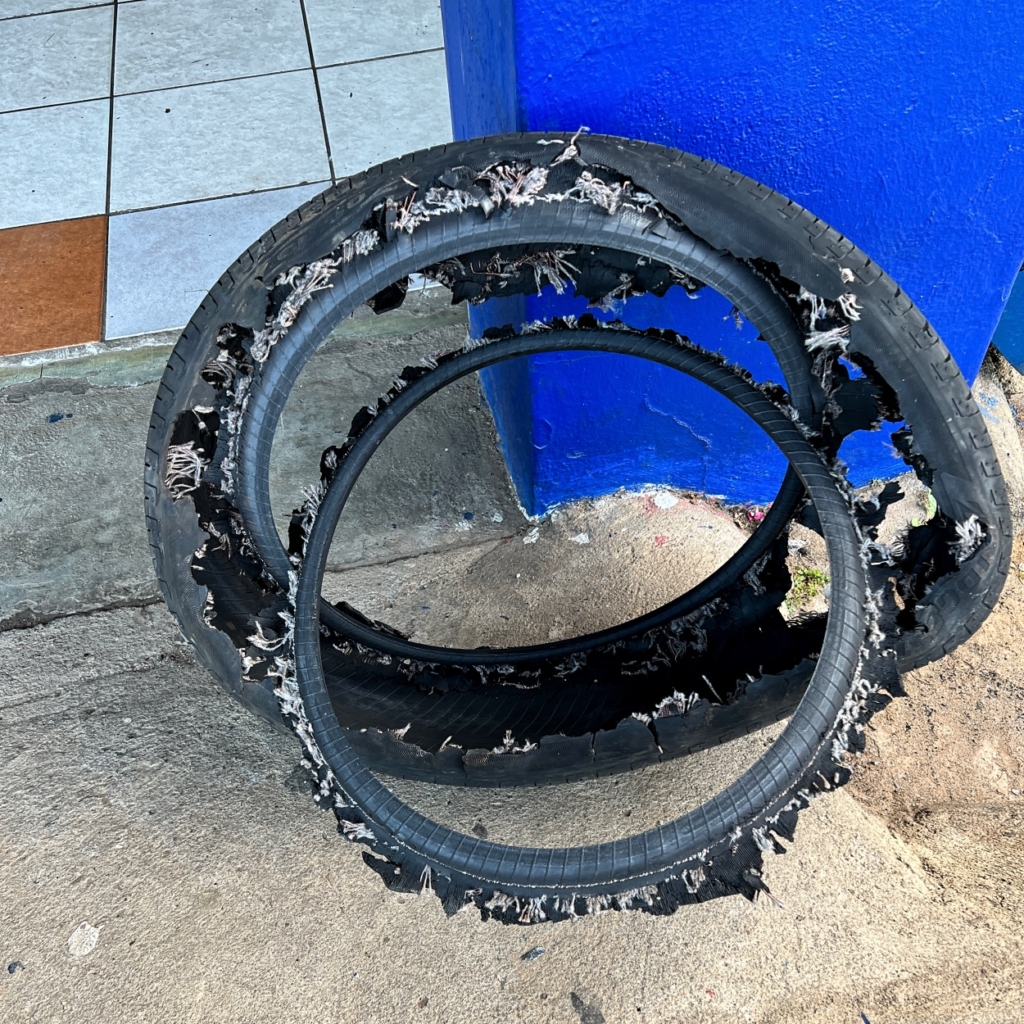
We went to the Toyota dealer to clip back the undercarriage and to a tire dealer to replace the front two tires (so that they matched). While we spent most of the day repairing the car and buying a SIM card, it was interesting as we were able to observe how local businesses function. Hertz, the rental company, offered absolutely no help and didn’t reimburse us for the new tires.
Eswatini National Museum
We are standing in front of the Eswatini National Museum with Celiwe, a guide who gave us considerable information on the country’s culture and history.
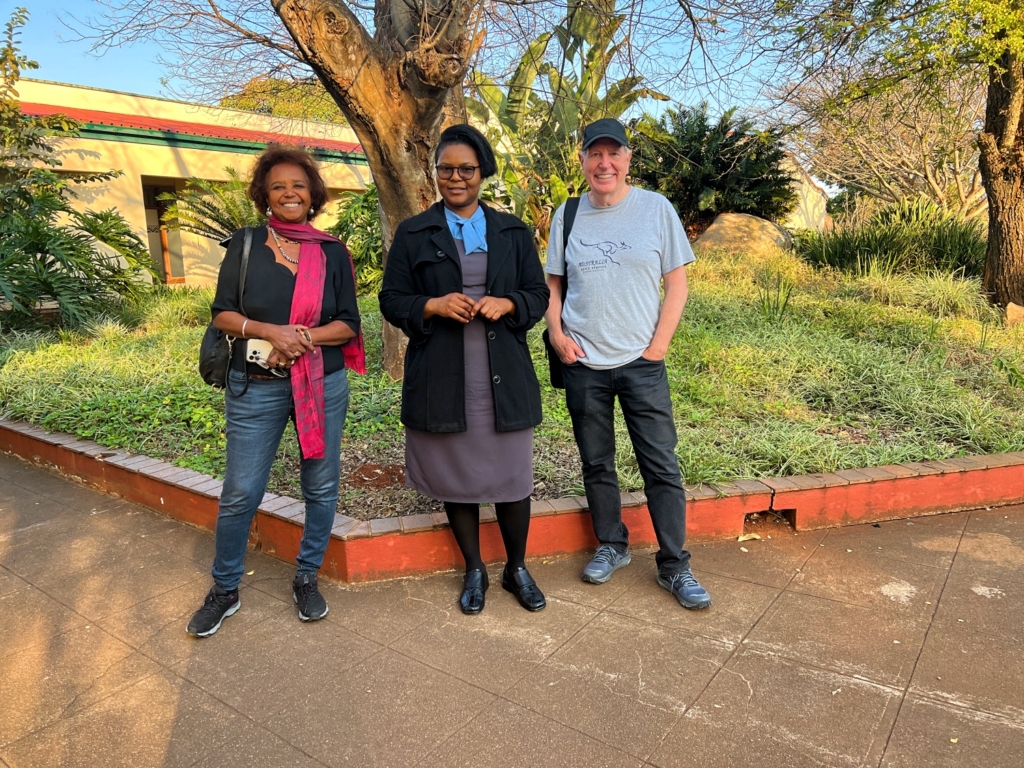
In the only two large rooms, the items are logically organized, with some modern Swazi art included. One cultural item I liked was this representation of Swazi warriors.
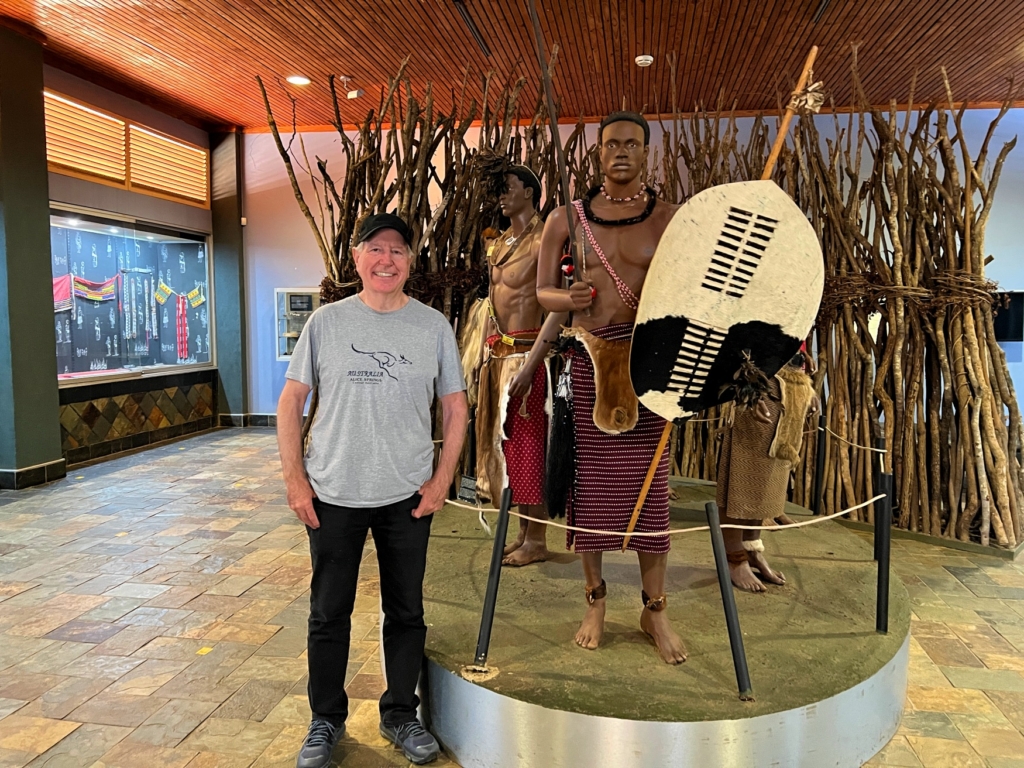
Sobhuza II Memorial
We went to the memorial and burial complex for the larger-than-life, first King of Eswatini, Sobhuza II. He was king for the longest verifiable reign of any monarch in recorded history. It lasted 82 years starting at his birth, spanning independence from Britain in 1968 and to his death in 1982. The Swazi economy prospered under his rule and any ethnicity was allowed to become a citizen.
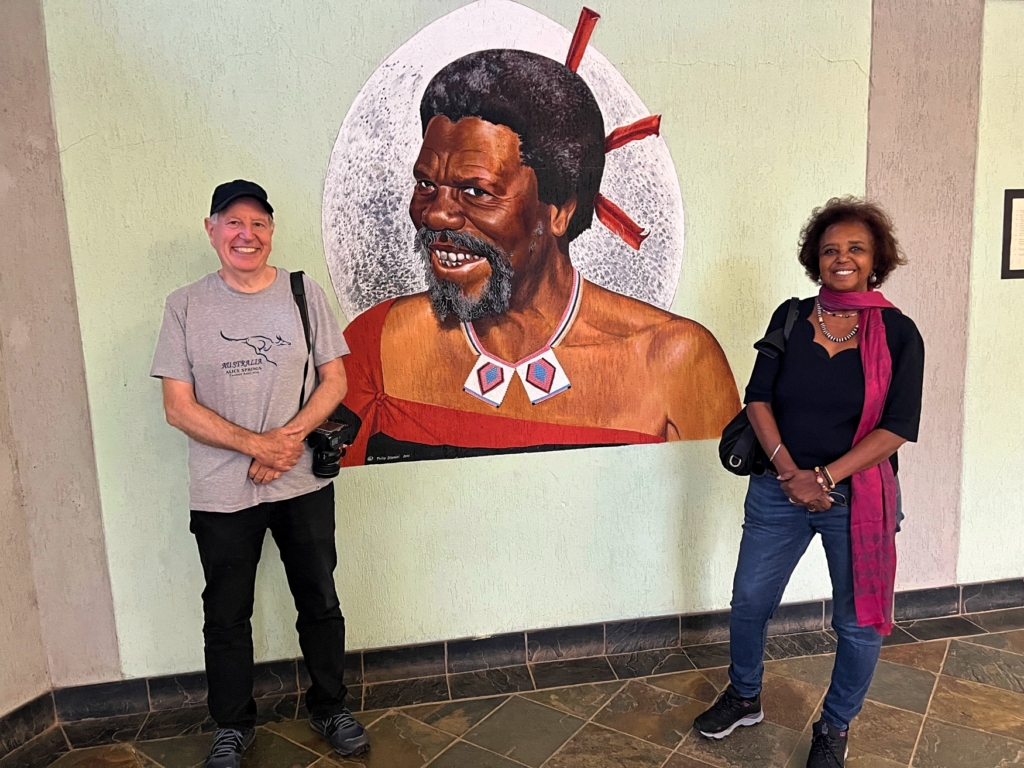
The memorial had part of his car collection including this 1959 Buick LeSabre.
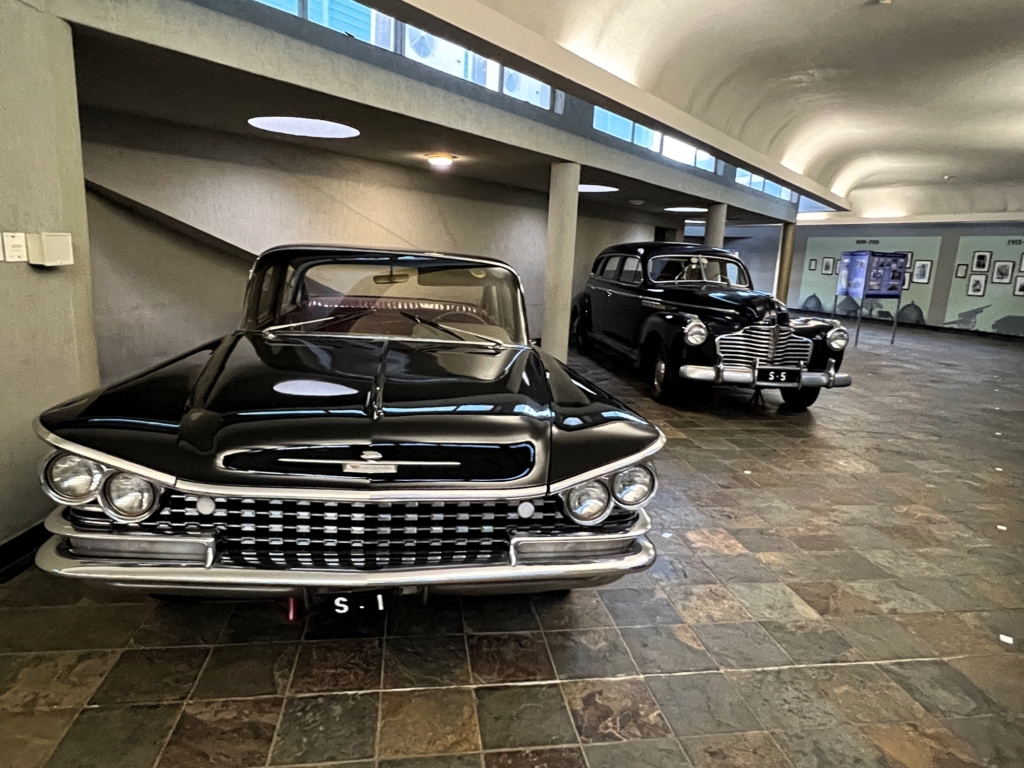
There was a display of the country’s flag which is one of the most interesting in the world. The central focus of the flag is a shield and two spears, symbolizing protection from the country’s enemies. The colors are meant to show that white and black people live in peaceful coexistence in Eswatini.
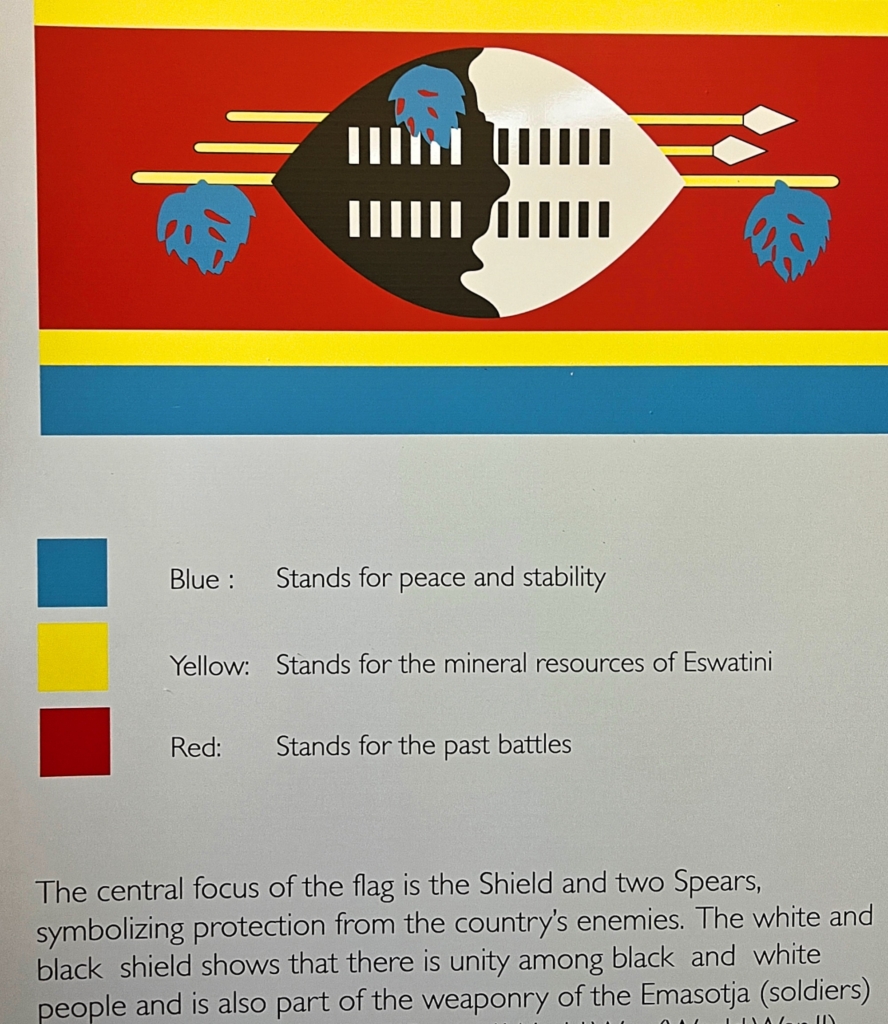
In every government building and many private businesses, there are three pictures of the current king, Mswati III (highest placed), the Queen Mother (in the middle) and the Prime Minister (lowest). This reflects the relative power of each position.
Dining in Mbabane
For each of the two nights in Mbabane, we had excellent dinners. Ramblas Restaurant claims to be the best in the city, and it well might be, serving local, Catalan and international dishes. The Velvet Monkey is an excellent Italian restaurant then managed by a young man from southern Italy. Here we had dinner with George, a United Nations colleague of Khadija and fellow Kenyan, and his wife. He was the UN Resident Coordinator for Eswatini and was able to describe the interworking of the government and the economy. The next day we met him at his office.
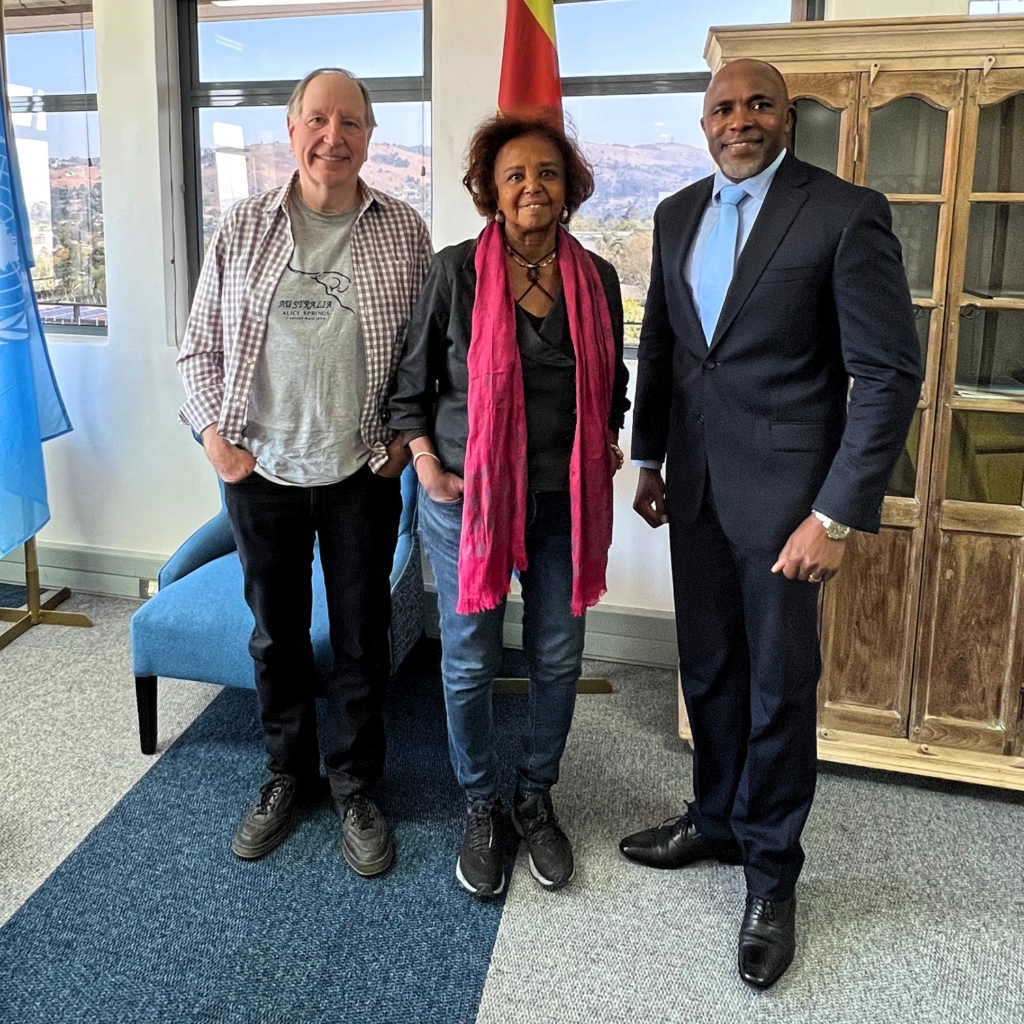
Ngwenya Glass Factory
The Ngwenya Glass Factory, 20 km / 12 mi northwest of Mbabane is known for its unique designs. It has a busy factory floor which you can observe from a catwalk.
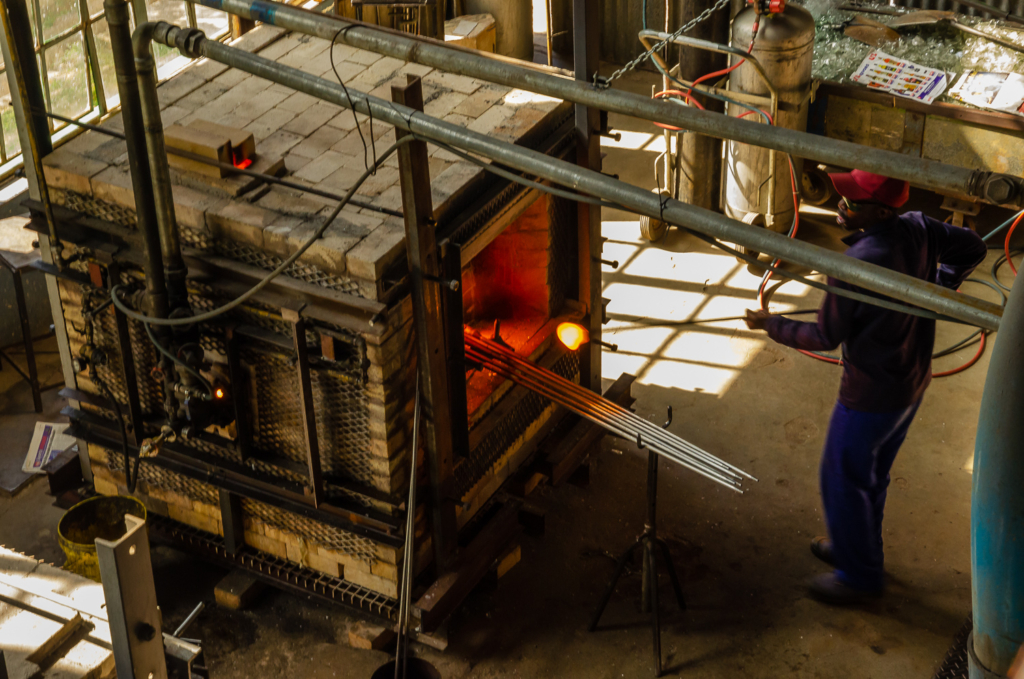
Like most businesses around the world, they were affected by the Covid shutdowns. Pre-pandemic they had around 90 workers, it was down to around 50 when we were there.
All their products are made with recycled glass. We bought two sets of glasses with animals on the stem.
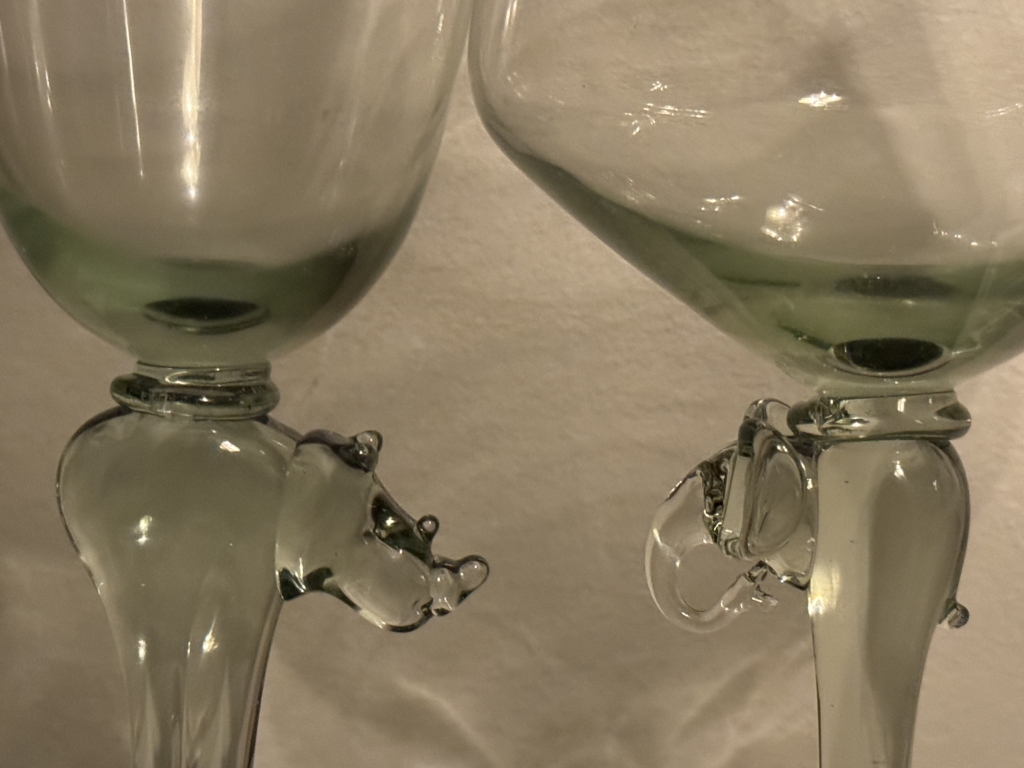
The business was started in 1979 by Swedish Aid. They built the factory, imported all the machinery and equipment and employed and trained locals in glassmaking. Except for being closed for a few years in the 80’s, it has been running continuously, a good example of a sustainable business in a developing country.
Sibebe Rock
The country claims to have the 2nd biggest monolith, named Sibebe Rock, next to Uluru in Australia. That was the same claim I heard in Mauritania last December with Ben Amera. Don’t know which is bigger or if there are others, but this is one huge lump of stone.
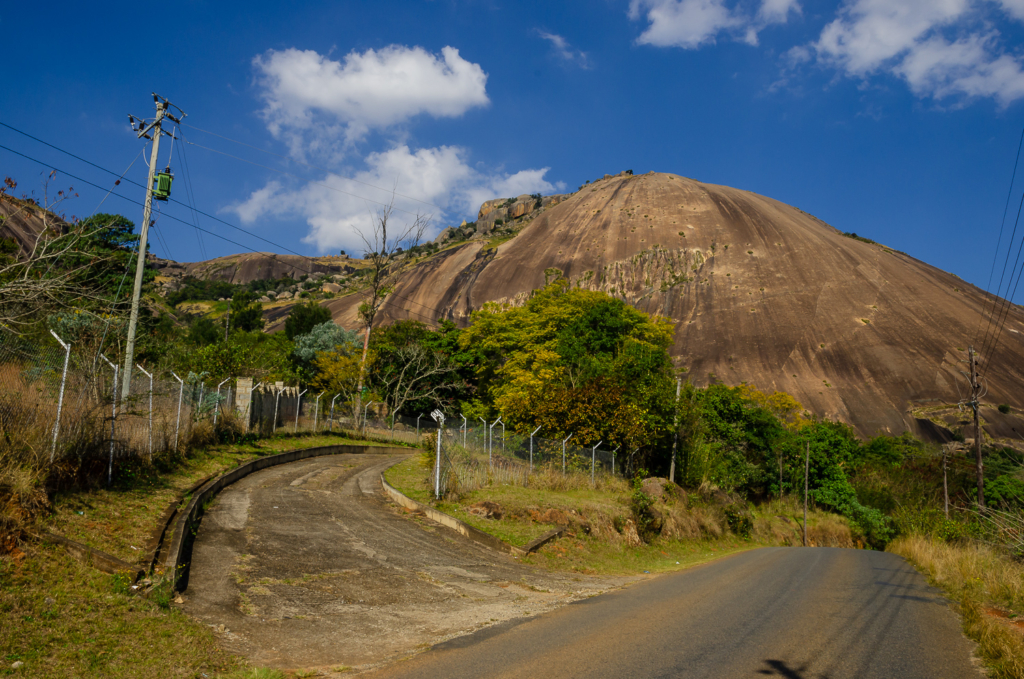
It’s only 9 km / 5.5 mi north of Mbabane.
Driving South in Eswatini
We had lost a day fixing the car, so we could not explore any other attractions in Eswatini. We drove south through a constantly transforming landscape of mountains, hills and agricultural plains. We kept driving as we crossed the border to South Africa and then arrived in Durban that night.
Durban
Durban is the third most populous city in South Africa after Johannesburg and Cape Town. It’s the chief seaport of the country and located on Natal Bay of the Indian Ocean. From a distance, the skyline stands out, but at closer inspection, it’s obvious that not many skyscrapers have been built recently.
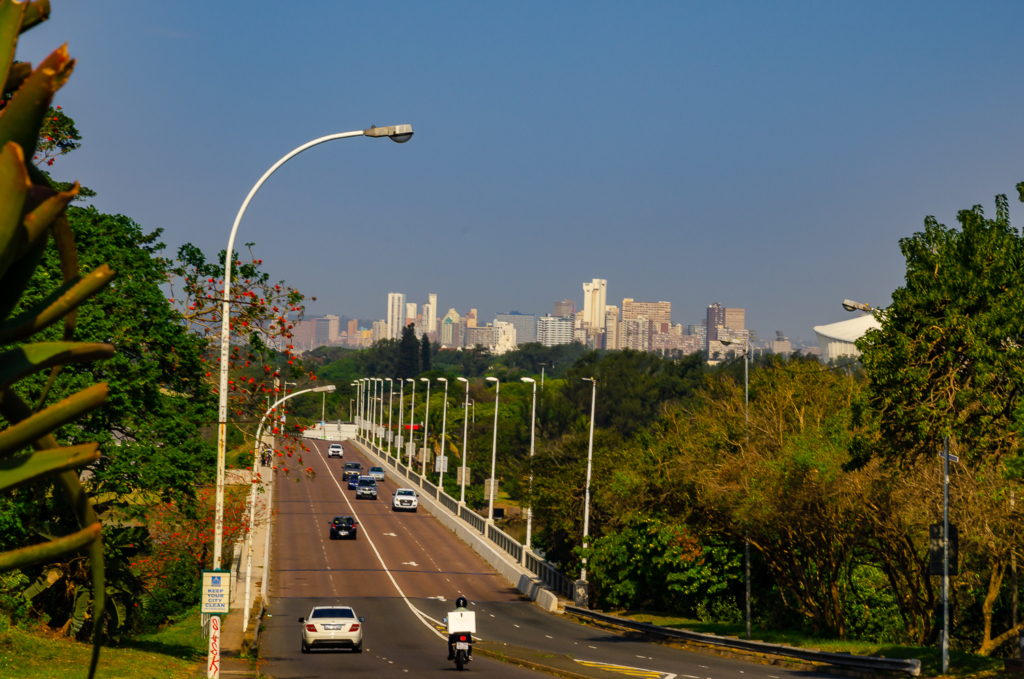
We hired a taxi to take us around the city for a few hours and the following is some of what we saw.
Central Business District
Durban has the bones of an impressive downtown with imposing Victorian buildings, such as this Post Office with a clock tower, interspersed in the mostly squarish architecture of the last 75 years and a few Art Deco gems.

The streets are wide and one-way.
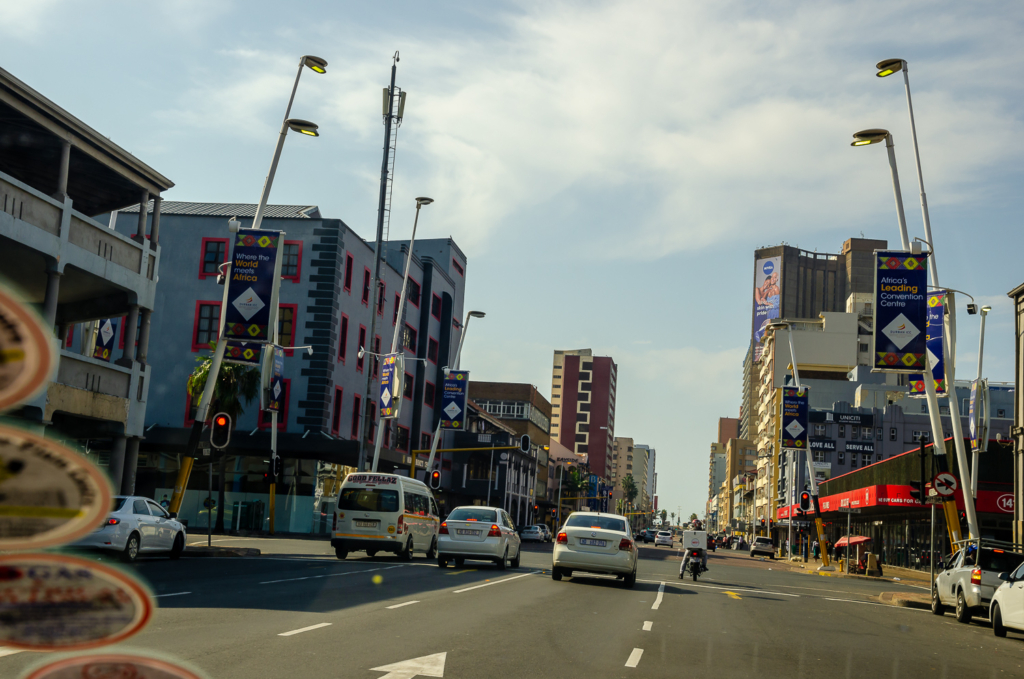
However, the central area is in decline as businesses have left for outlying areas or just abandoned their operations because of security concerns. There has been a huge influx of street vendors selling cooked and uncooked food, clothes and household items. They have changed the look from orderly to randomness (but with energy).

Victoria Market
We walked inside the quiescent Victoria Street Market (aka the Indian Market) to see what shops there are and ended up buying dates to snack on while driving.
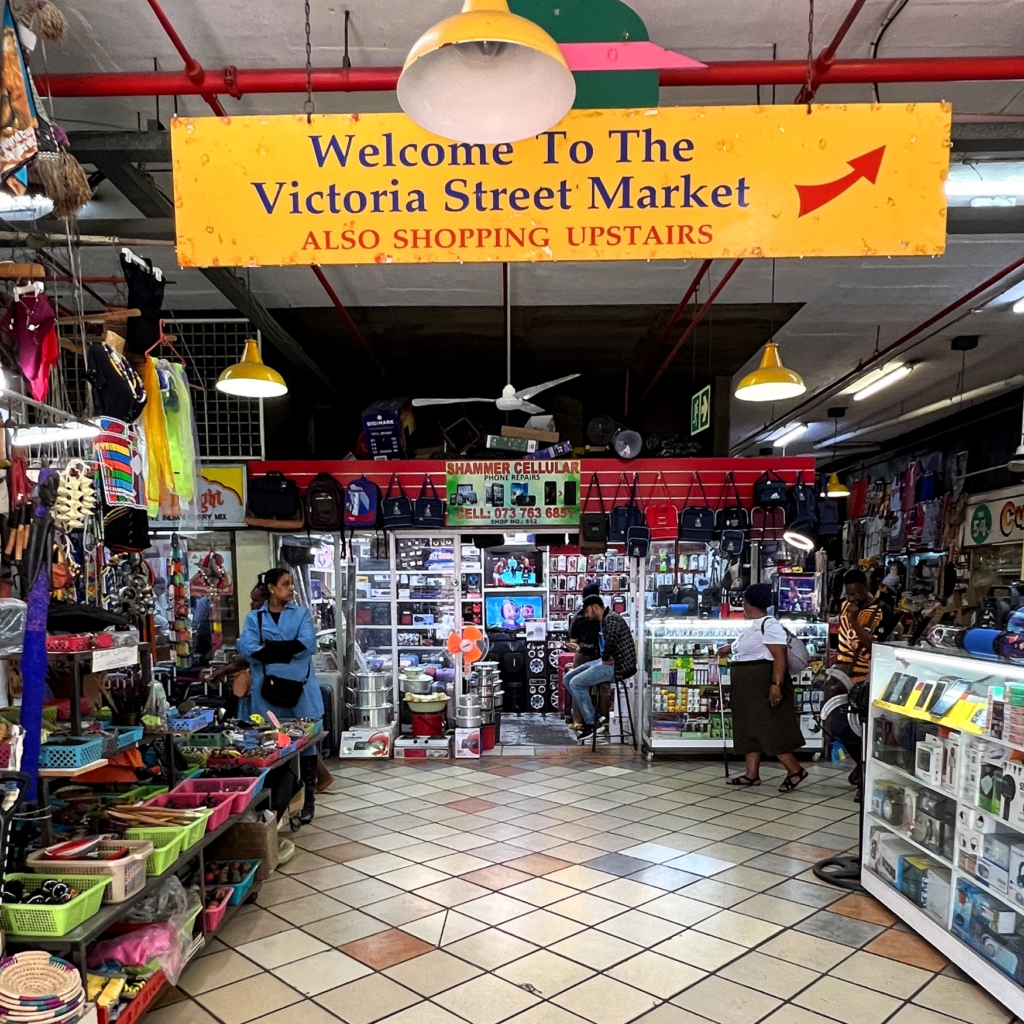
Golden Mile Beach
Durban is blessed with a long stretch of beach on the Indian Ocean, some of it known as the Golden Mile. There were few people when we were there as it was a weekday in the winter, but it’s packed on the weekend in the summer. Durban’s climate is comfortable in the winter and not too humid. The summers can be oppressively hot.
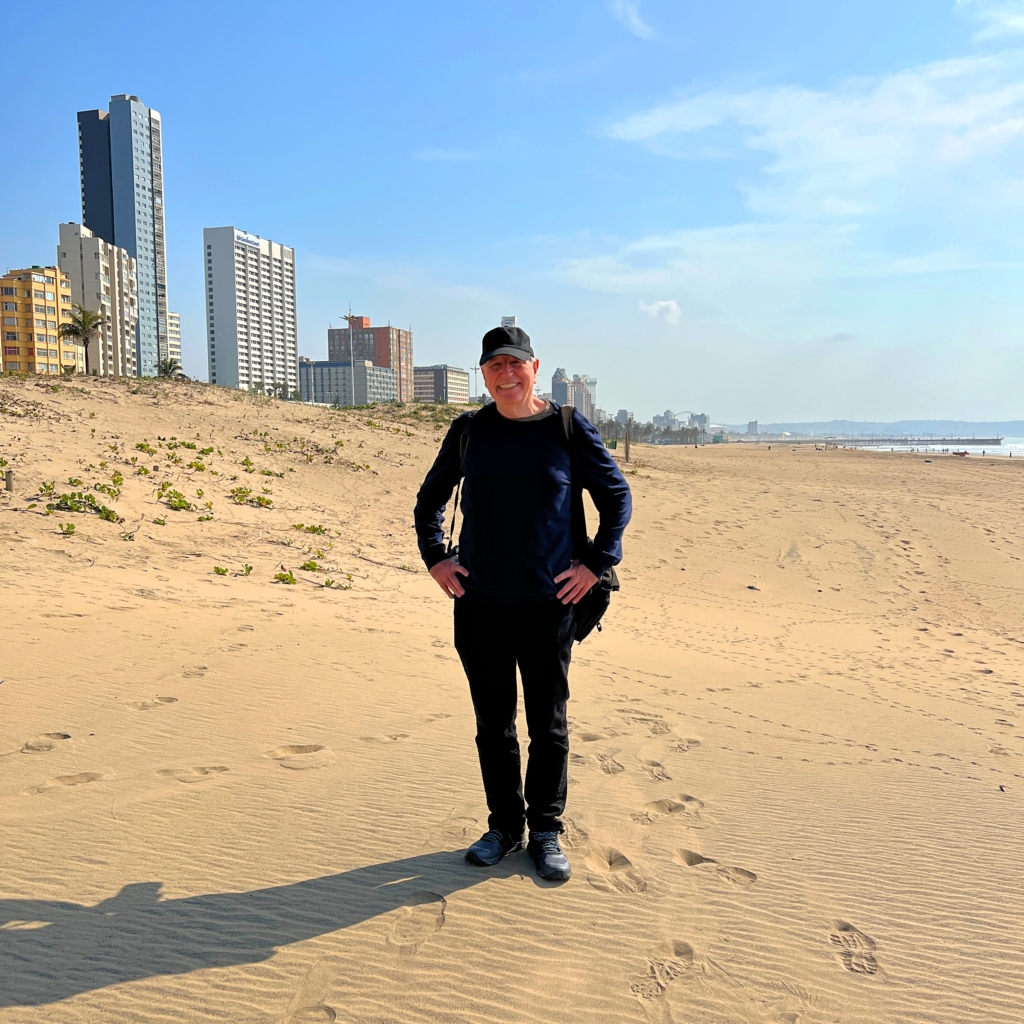
On a pier, I met John. I naturally approached him as he had a very long lens on his camera (for birding). He has lived here his whole life and speaks Zulu as well as English.
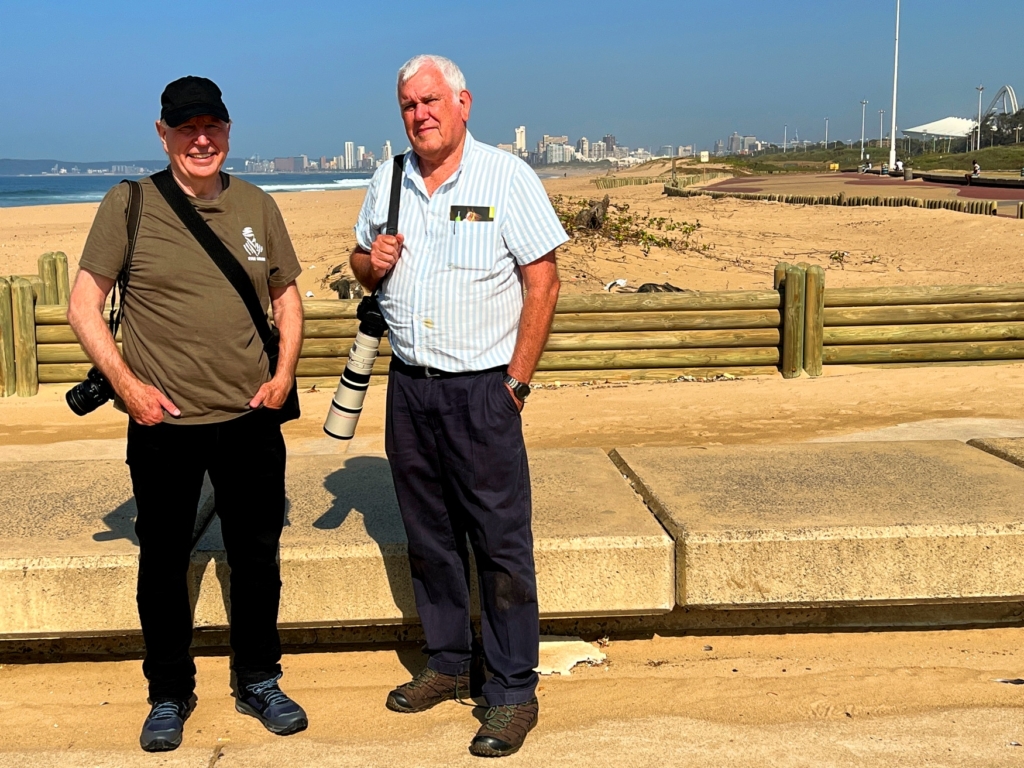
We discussed the 2021 riots in the KwaZulu-Natal (where Durban is) and Guateng (where Johannesburg and Pretoria are) provinces, ignited by the imprisonment of former President Jacob Zuma and aggravated by long-simmering tensions over economic disparities. There was more than US$1 billion of damages with looting of shopping malls, private residences and other types of property including a chemical plant by John’s home, which had the inventory spilled into waterways. According to John and others, the police hardly did anything to stop the violence.
John said if this happens again, the businesses and homeowners will be armed. He said he had nine guns, hundreds of rounds of ammunition and his neighbor made bullets if he needed more. Of course, the result would be a bloodbath.
Durban and South Africa in general have been experiencing a deterioration of public service, especially electricity blackouts on a daily basis. The country appears to be at a crossroads and hopefully, it can manage its deep-seated issues and progress economically and socially.
Moses Mabhida Stadium
Moses Mabhida Stadium was completed in 2009 and was one of the host stadiums for the 2010 FIFA World Cup.

These women were strolling outside when we were there.
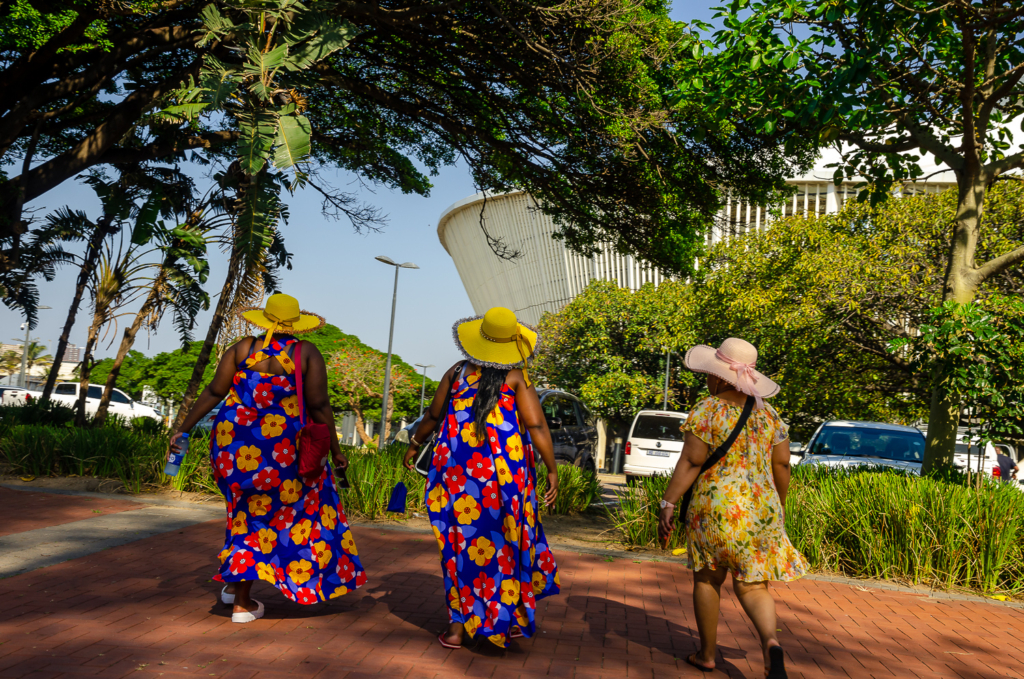
Outside is a bust of Mabhida, who was a General Secretary of the South Africa Communist Party.

In the 1980s, he worked with political and logistical planning for the ANC’s armed wing, Umkhonto we Sizwe, based at various times in Lesotho, Mozambique and Eswatini. In 1985, while on a mission to Havana, Mabhida suffered a stroke, and after a year of illness, died of a heart attack in Maputo and was buried there in 1986, before the end of apartheid in 1994.
On the Road to Matatiele
We left Durban and stayed overnight in the Resthaven Guesthouse in the farming-town of Matatiele, not far but on a rough dirt road, from a pass over the Drakensberg Mountains and the border of Lesotho.
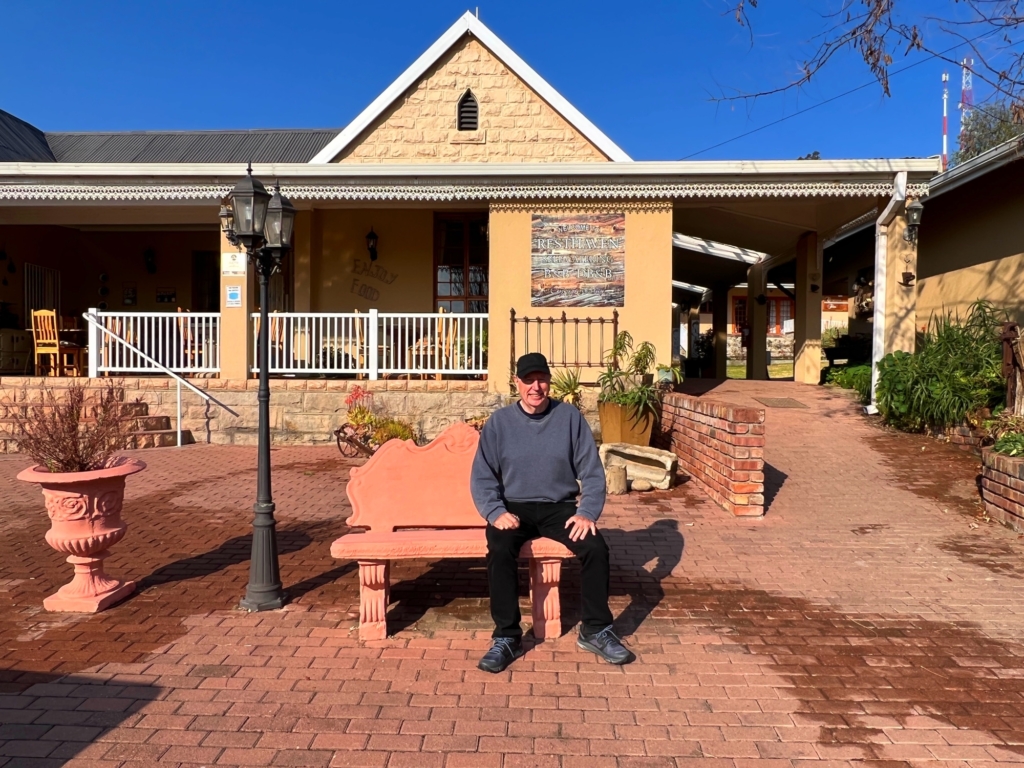
Lesotho Mountain Highways
The main memory I have of Lesotho is driving through the mountains. It’s one of the countries with over 90% of the land covered by mountains (the others are Bhutan, Tajikistan and Kyrgyzstan). One claim to fame is it has the highest lowest point of any country.
Unsettlingly, it’s almost treeless. Apparently, over a couple of centuries, the mountains have become denuded from over-cutting and disease.
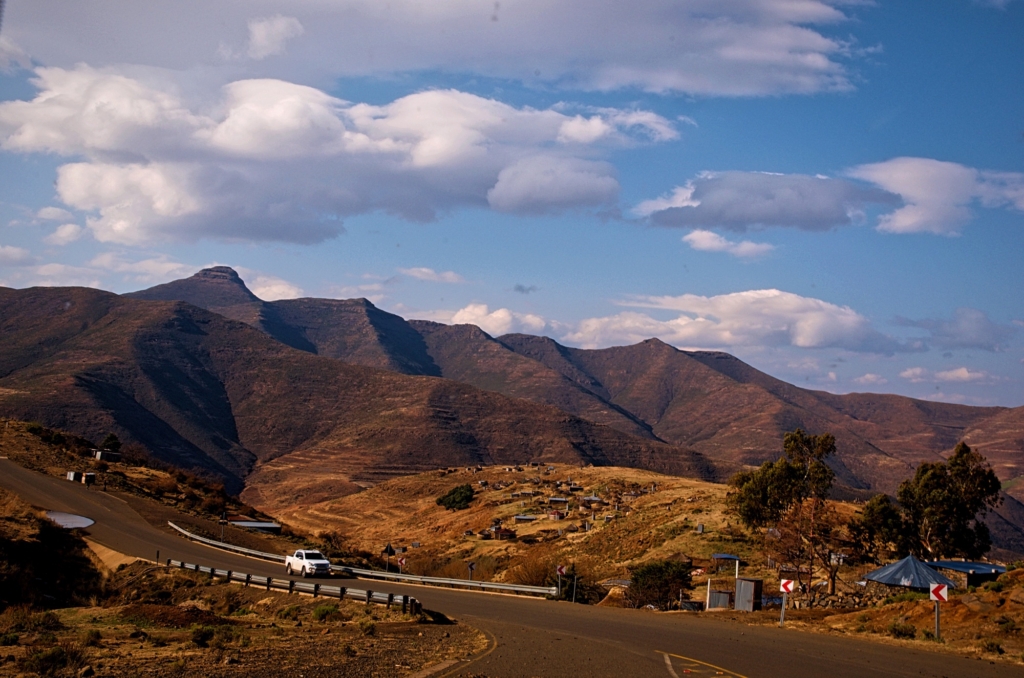
While the mountains are mostly treeless, certain rivers are lined with thickets and shrubs.
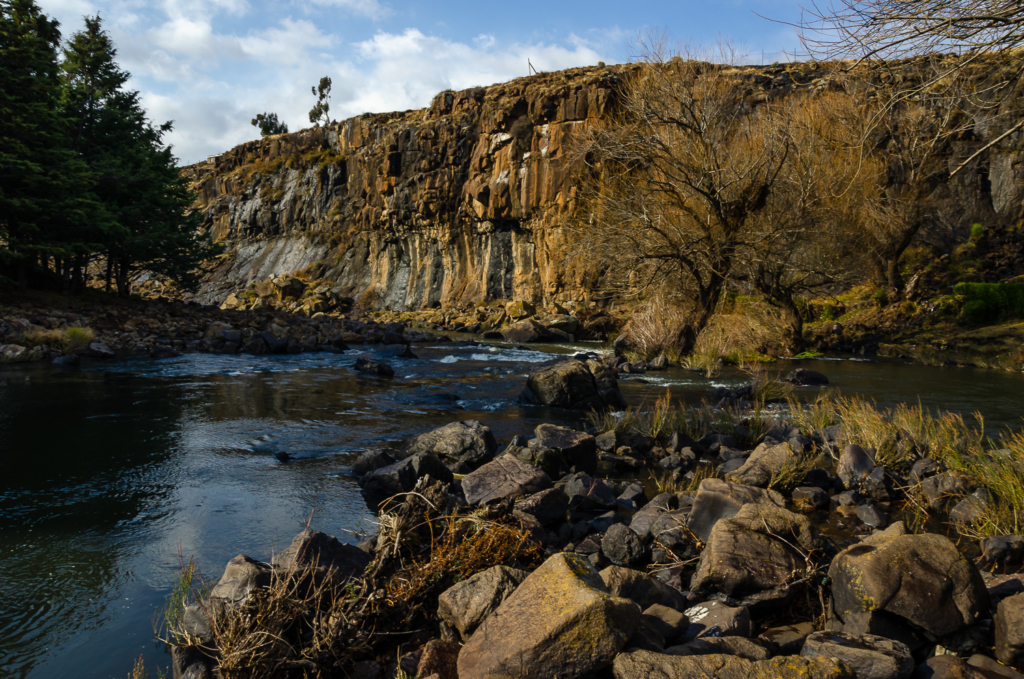
The main north/south highway in the west, built by the Chinese, often has large boulders on it, sliding from the steep hills.
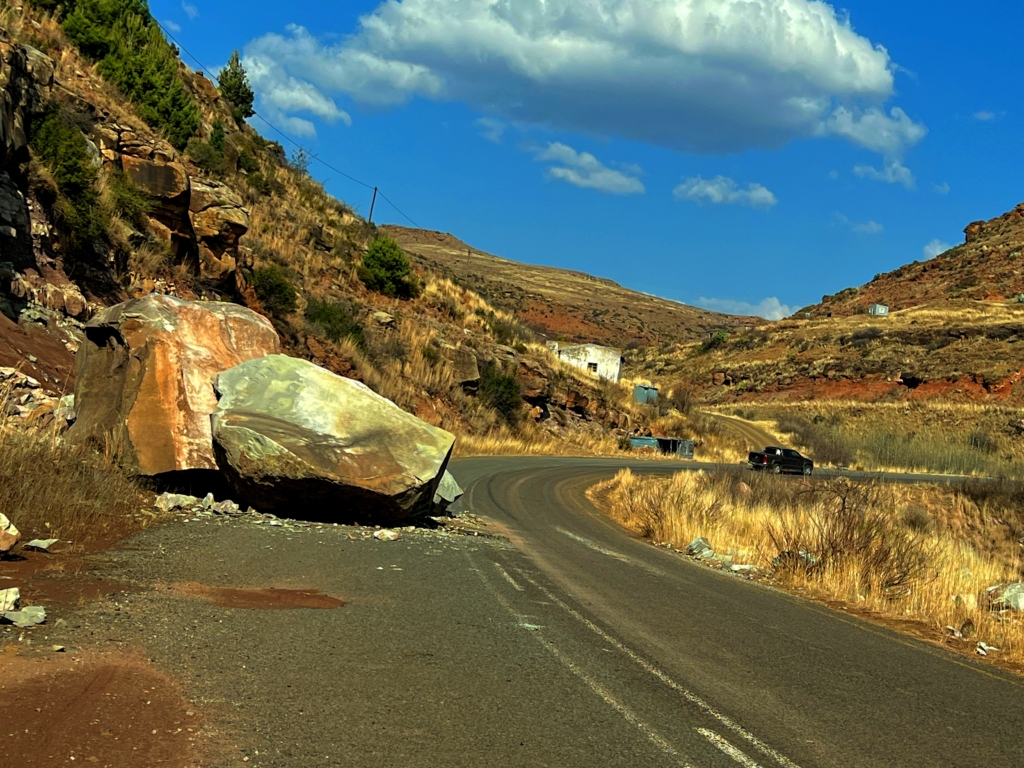
Many homes are on the sides of mountains and hills, thus the need for horses.

It’s common for landscapes to contrast cultivated land with mountains.
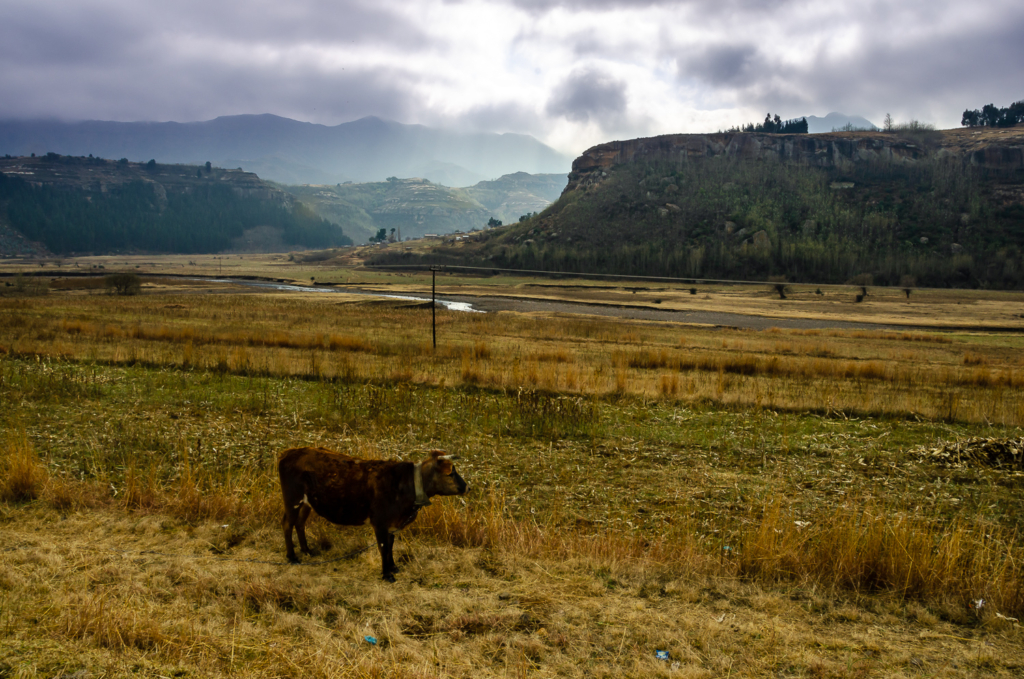
It’s cold here, which is why everyone wears jackets, hats and blankets. This is mainly due to the high altitude (from around 4,500 ft / 1375 m to 11,500 ft / 3,500 m. Also, as it’s in the Southern Hemisphere and was winter when we were here.
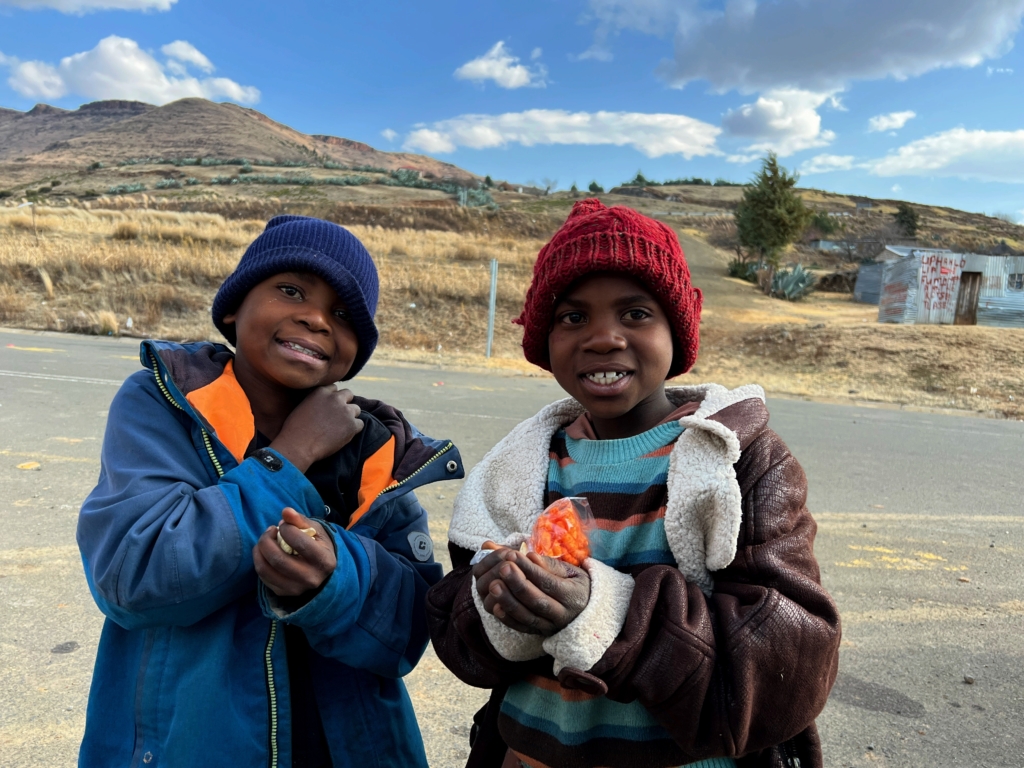
Semonkong
Semonkong is an area with small villages and near several natural attractions. Semonkong Lodge is an ideal place to stay to explore the region. Accessing the lodge without an SUV was challenging, as most off-highway roads are in Lesotho.
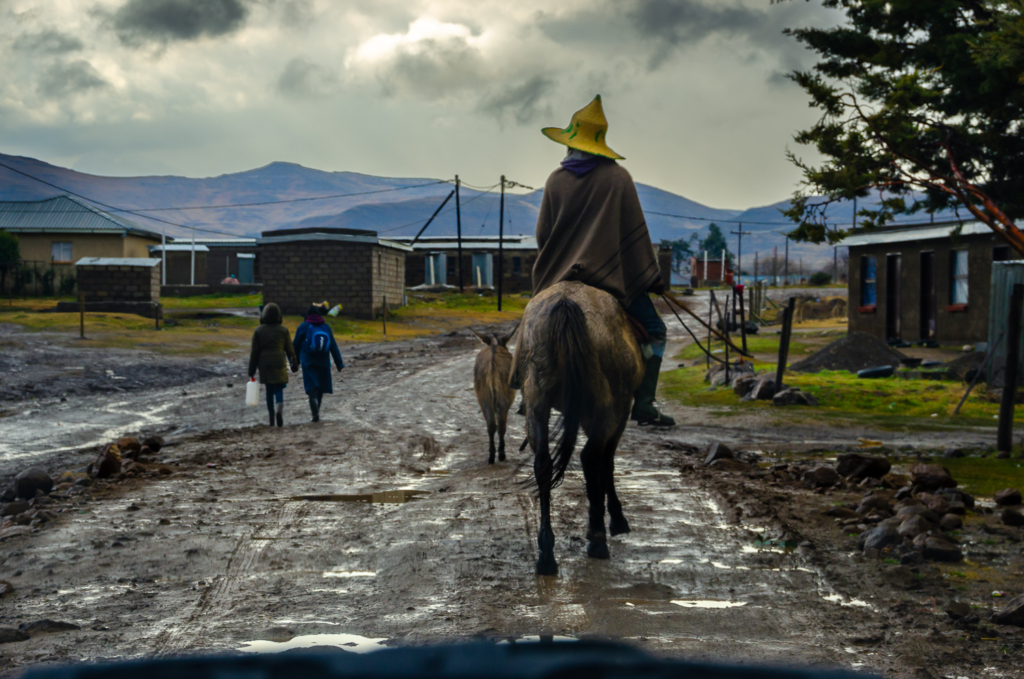
We stayed in a cottage that was charming but cold as the wood burner wasn’t sufficient given the high ceiling. As a result, Khadija spent an extended period of time in the restaurant next to the fireplace.
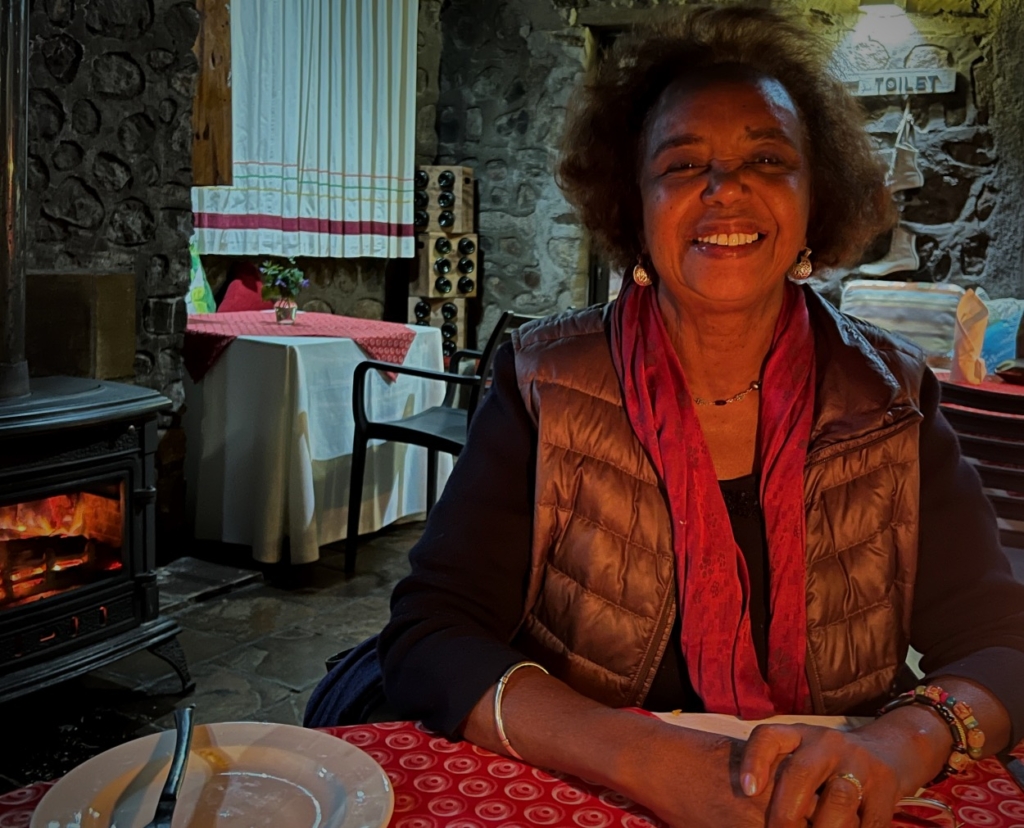
The music was odd though, American country and western, including many songs by Don Williams whose heyday was in the 1970s.
Maletsunyane Falls
Maletsunyane Falls is quite high and in an incredible canyon. We rushed to arrive before sunset, and I was ecstatic about having a burst of especially warm light.
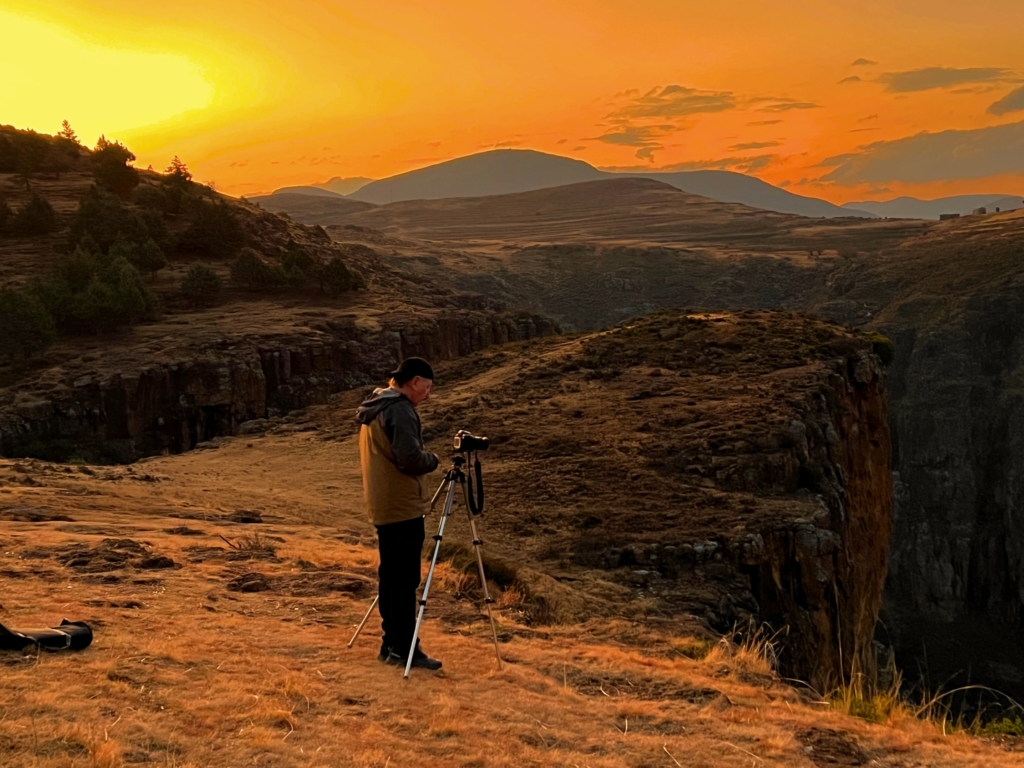
As a result of carrying my tripod thousands of miles and being there at an ideal time, I took many shots that highlighted the canyon.
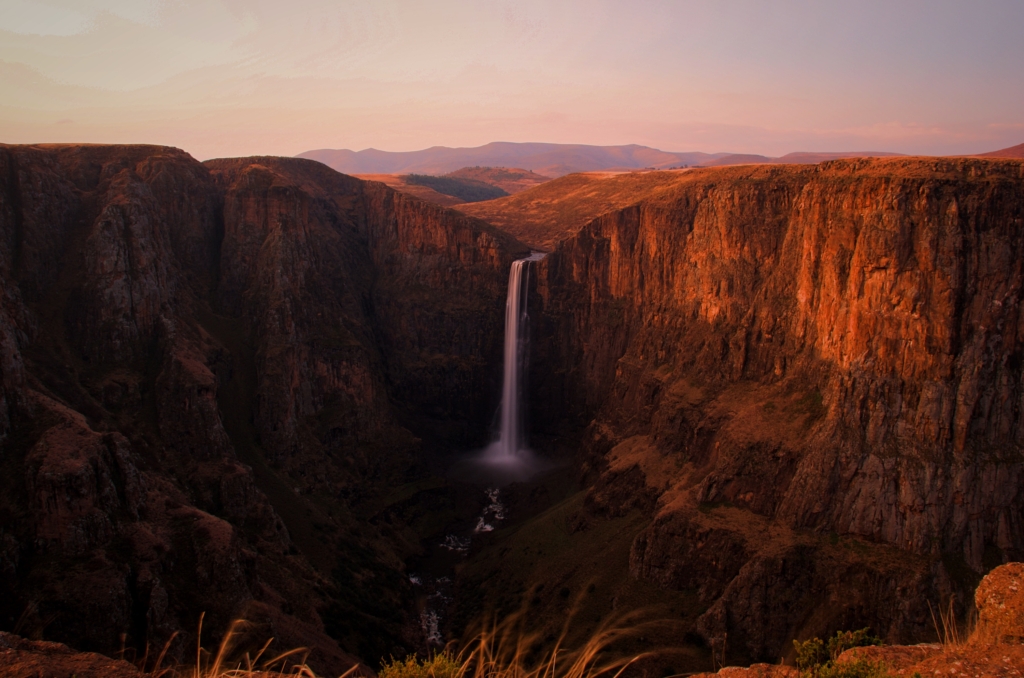
Masetho and the Basotho Blanket
The Basotho blanket, made mostly of wool and cotton, is widely worn by the Sotho people. Without a doubt, the best person in Lesotho to tell the history and uses of the blanket is Masetho, who lives in Semonkong. She gives a flawless presentation with the timing and fluency of an Off-Broadway actor in a monologue.
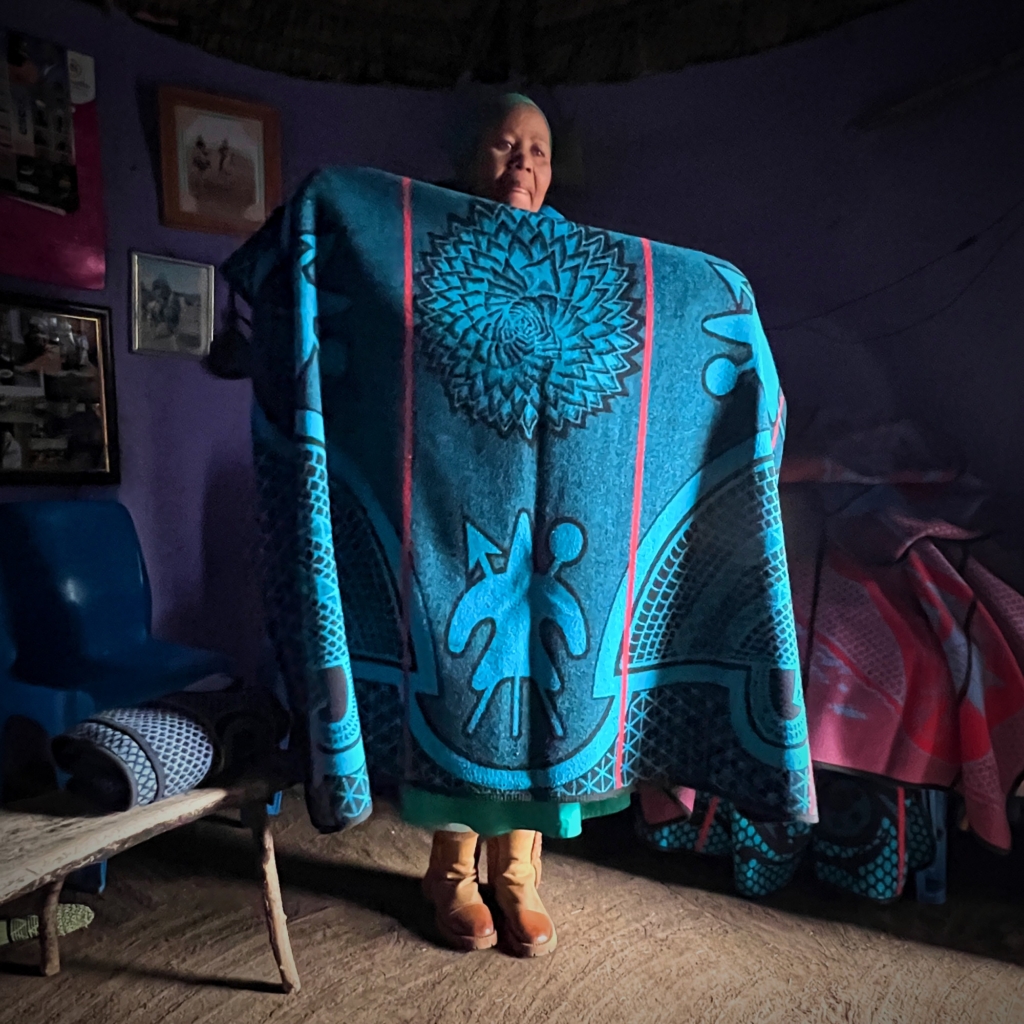
The story goes that a British man gave a blanket to King Moshoeshoe I in the late 1800s and it quickly gained popularity in this often cold, mountainous country. Masetho not only explains the common patterns but also how the blankets are worn by women with babies, horse riders and others. The blankets have a darker masculine side and a lighter feminine side. Common motifs are maize and hearts. I really liked the WWII RAF airplane design.
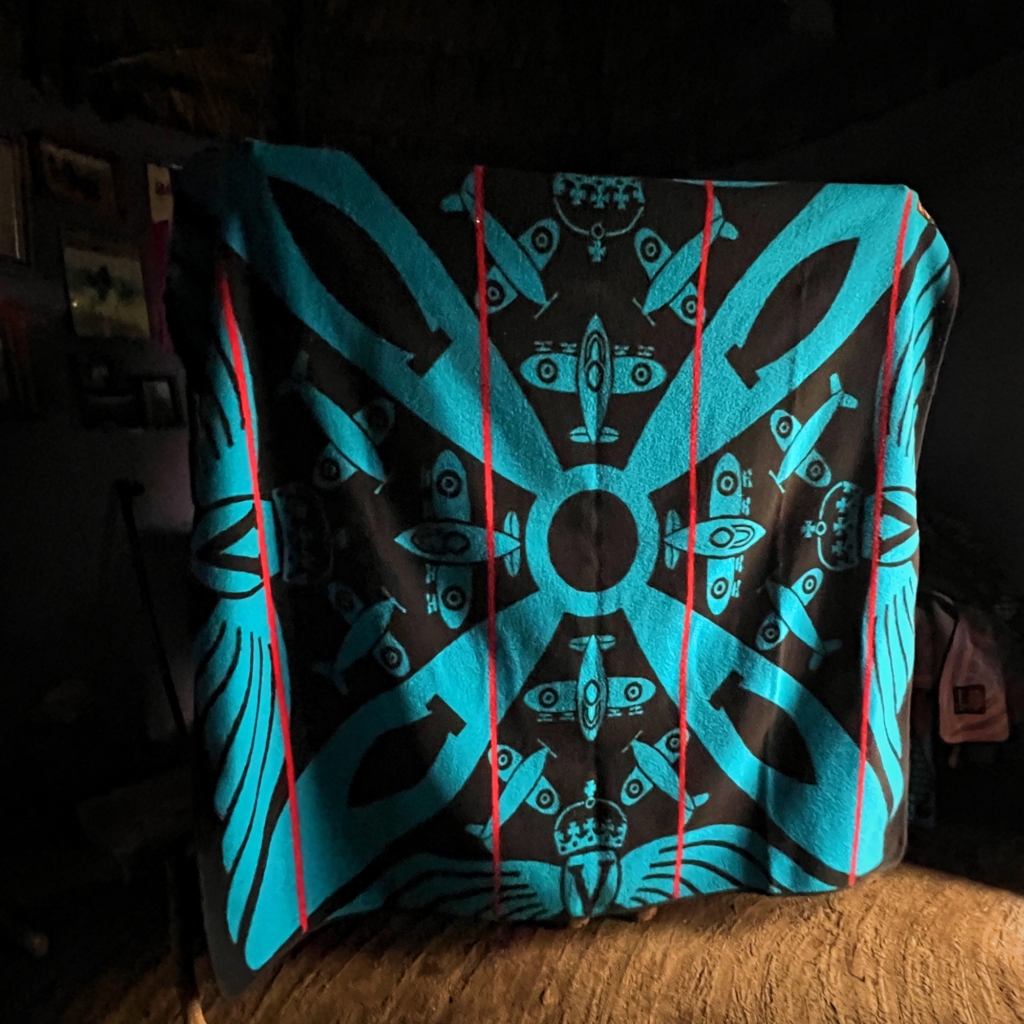
You can arrange a visit to her house for the presentation through Semonkong Lodge.
Drive to Maseru
We drove to the capital, Maseru and spent the night. We would have gone to the Lesotho National Museum but it was closed. Regrettably, we didn’t have enough time to visit the nearby Thaba-Bosiu National Monument, a UNESCO World Heritage Site.
Tsehlanyane National Park and Maliba Lodge
Maliba Lodge is the best place to stay in Lesotho. It has chalets with typically African, high-pointed roofs that correspond to the shape of the nearby mountains. The interior met the bourgeois standards of Khadija, including comfortable furniture in a spacious room, a bathroom with a large tub by the window, a functioning fireplace, and a wonderful porch with a lower area for an unobstructed view of Tsehlanyane National Park.
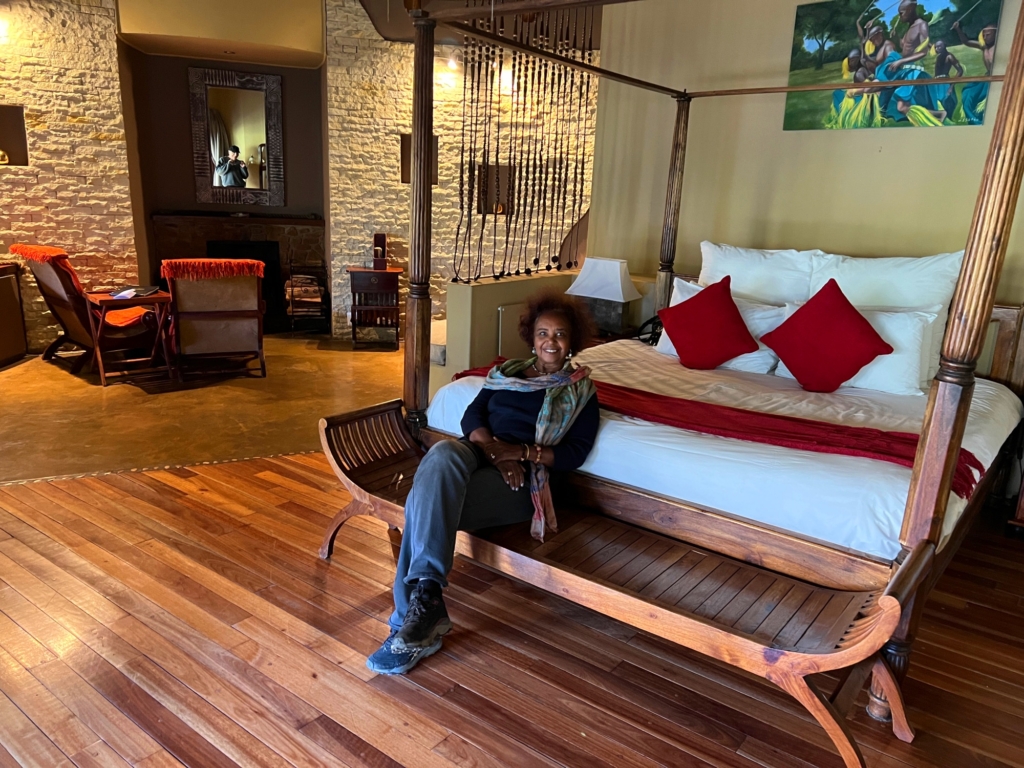
Hiking the Maliba Trail took us four hours for a supposedly three-hour hike as we stopped for frequent photos and were slow in crossing streams and rivers. The encouraging part of the scenery was trees everywhere unlike in most of the country.

While traveling, you meet other visitors. This happened in Lesotho with these three from Australia. However, they weren’t sightseeing but doing exceptional work.
Gary and his sister Liz were delivering English reading materials created by Gary (beginners’ books which related to life in Lesotho) and training locals on how to use them. Anne, a nurse and next to Khadija, was training local nurses who function as the equivalent of doctors.
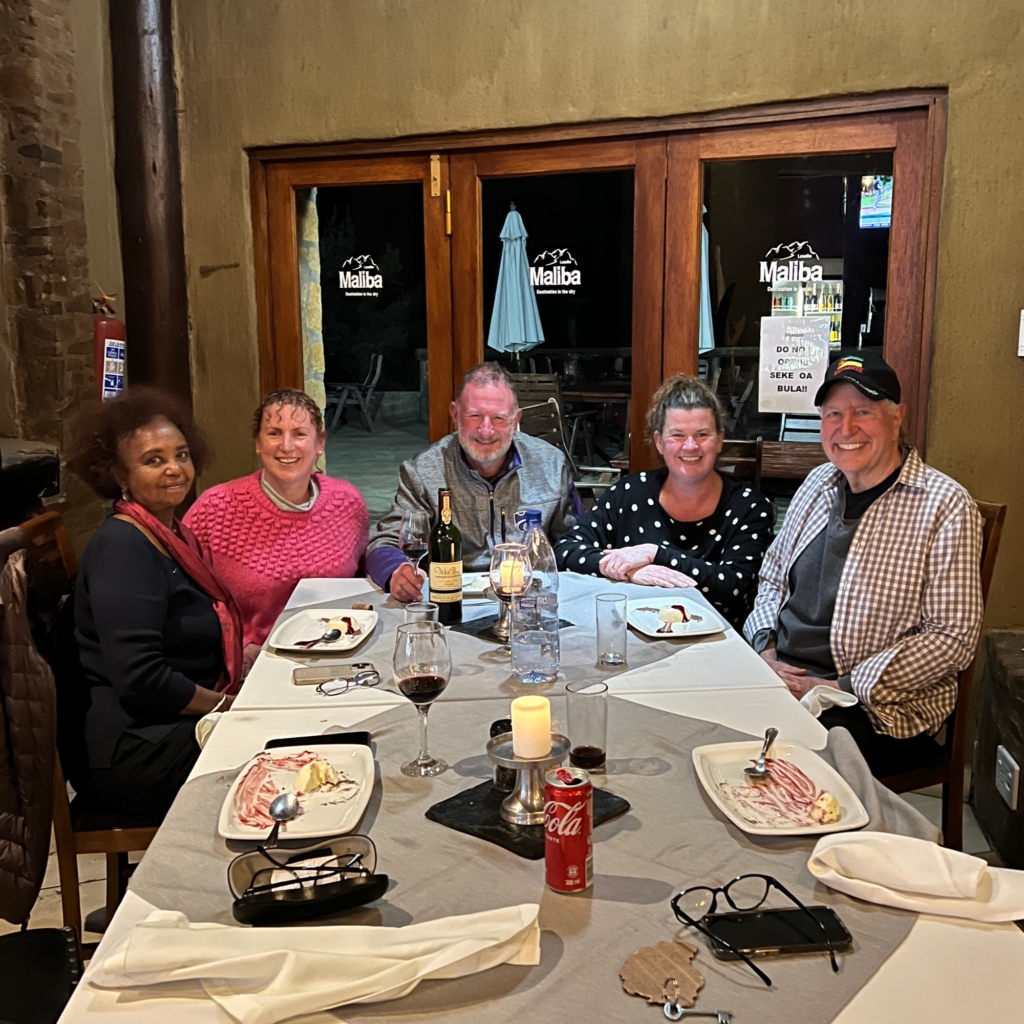
Individuals who do this type of important volunteer work deserve praise and recognition. However, they probably receive little and do it because they want to make a difference. We are looking forward to seeing Gary who will be visiting us sometime in New York.
Just after we left the park, we stopped to speak with this shepherd with three skinny dogs. However, we didn’t know any words in common. Through body gestures, we wished him a good day and gave him cashews which he appeared to have appreciated.
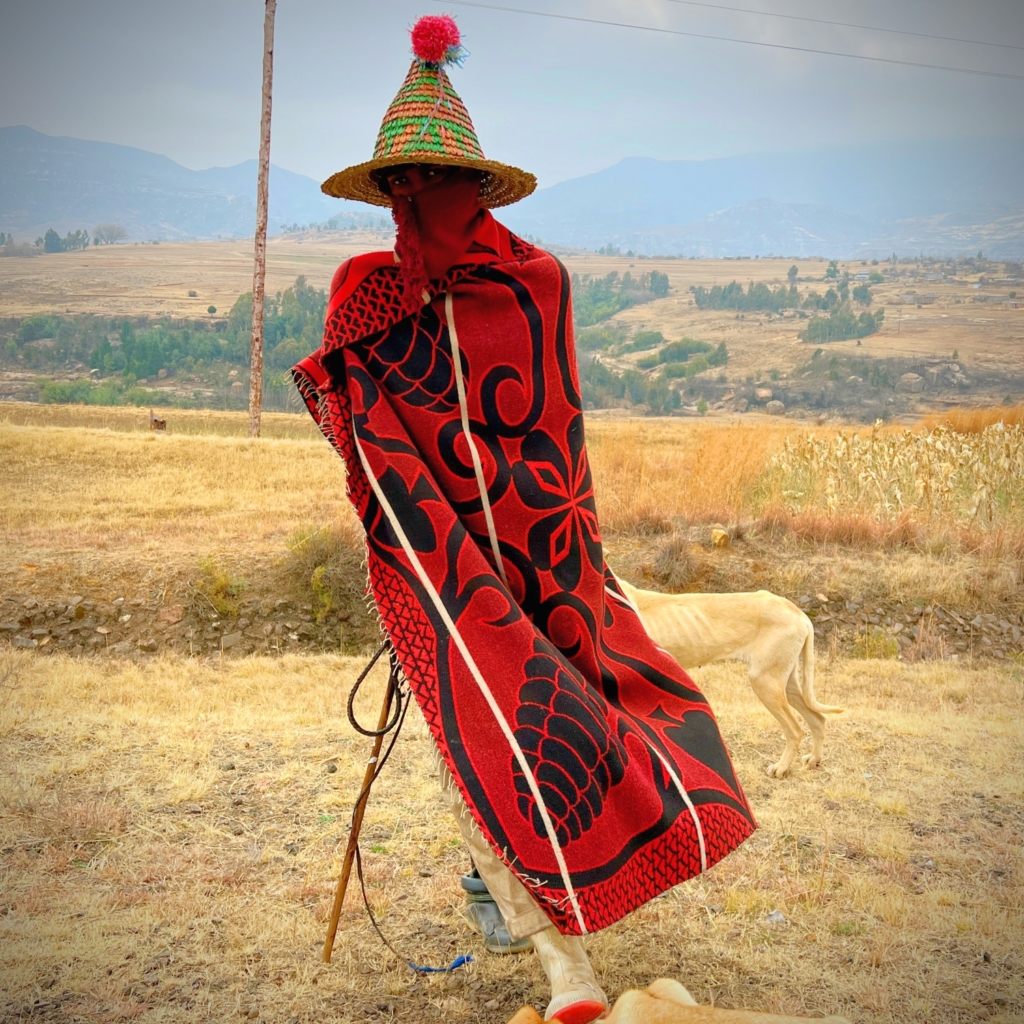
Clarens
On this trip, a few people recommended going to Clarens, an hour’s drive from the border in Lesotho and a four-hour drive to Johannesburg. It was established in 1912 and named after the town of Clarens in Switzerland where exiled, controversial, Boer politician Paul Kruger spent his last days.
We are glad we took their advice, as the small town is bursting with art galleries and boutique shops.
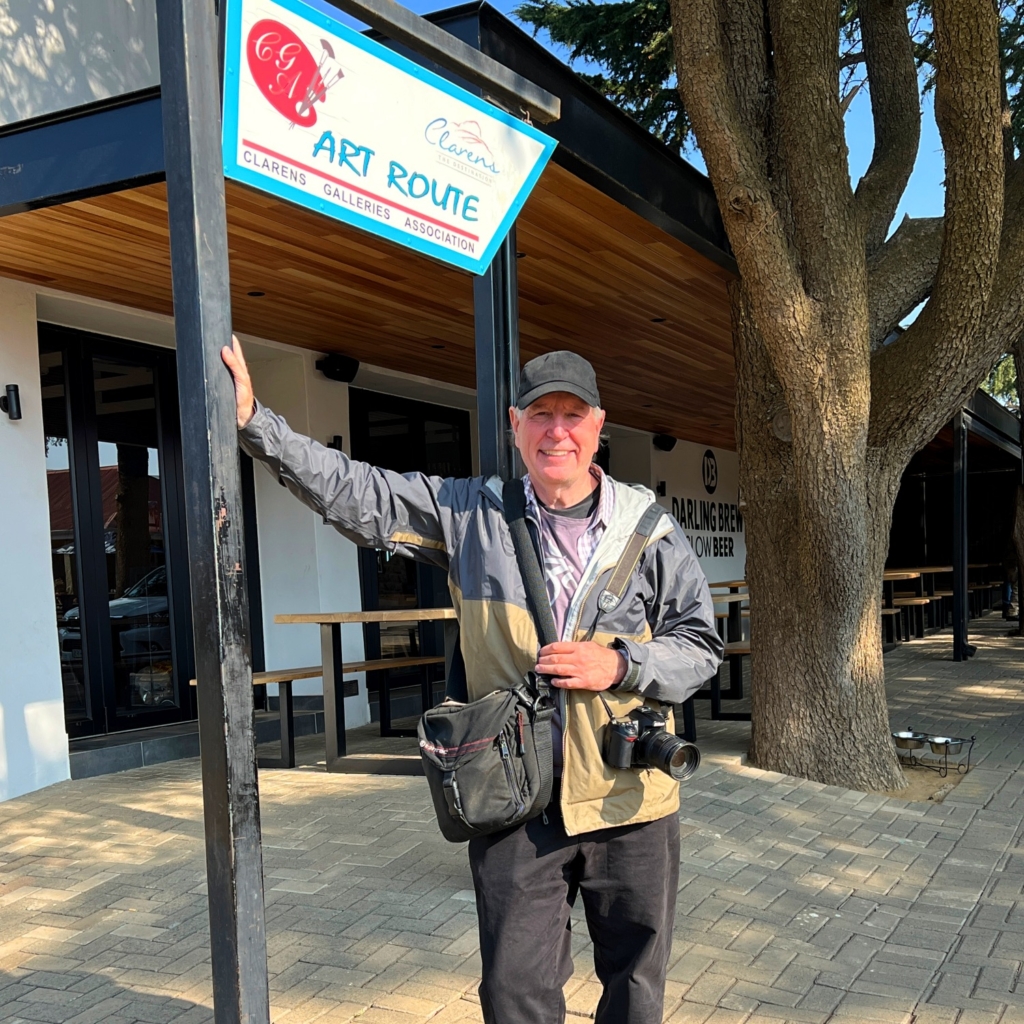
It’s a pleasant locale with cafes and restaurants like Time and Again where Khadija sipped coffee.
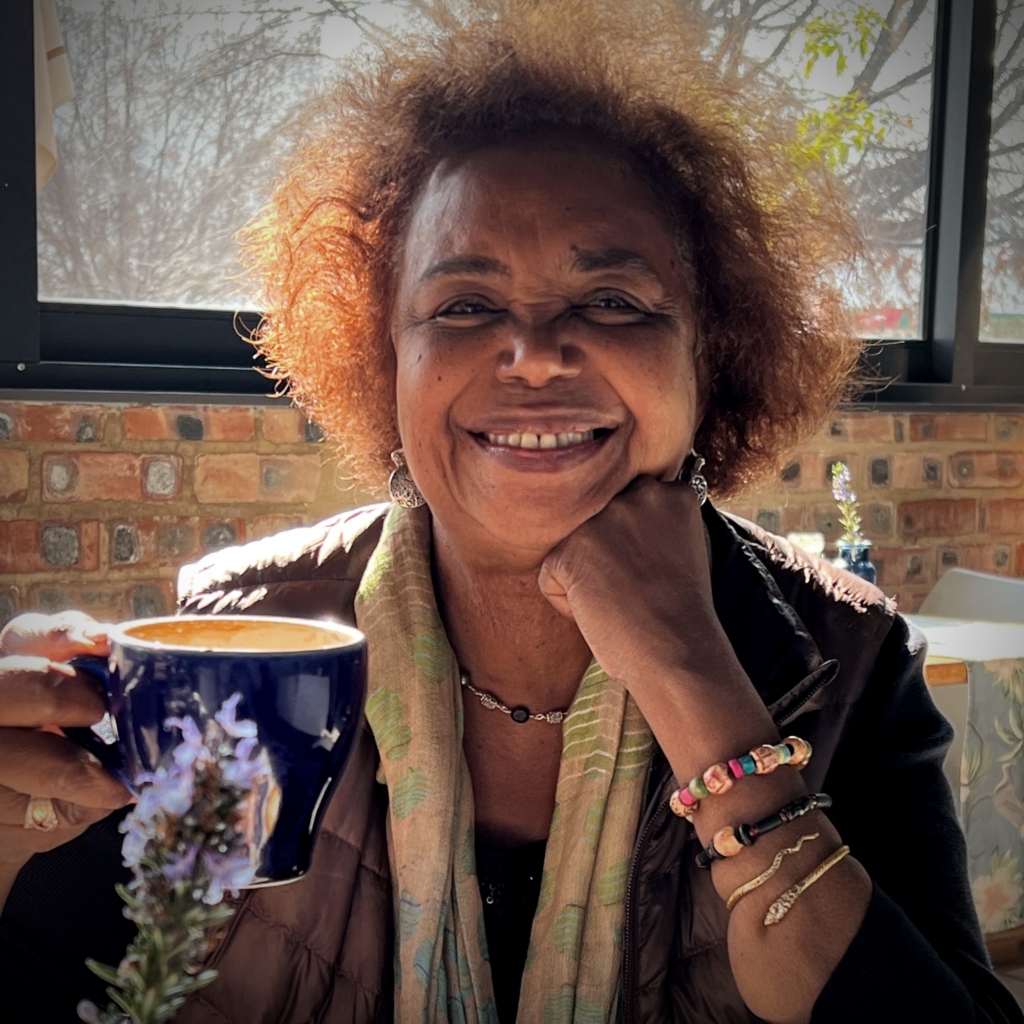
It also has outfitting stores as it’s next to the Maluti Mountains which has many opportunities for hiking, horse riding, and abseiling.
On the drive back to Johannesburg, we stopped in Bethlehem to wash the car and saw this mother and her child in a pleasing light.
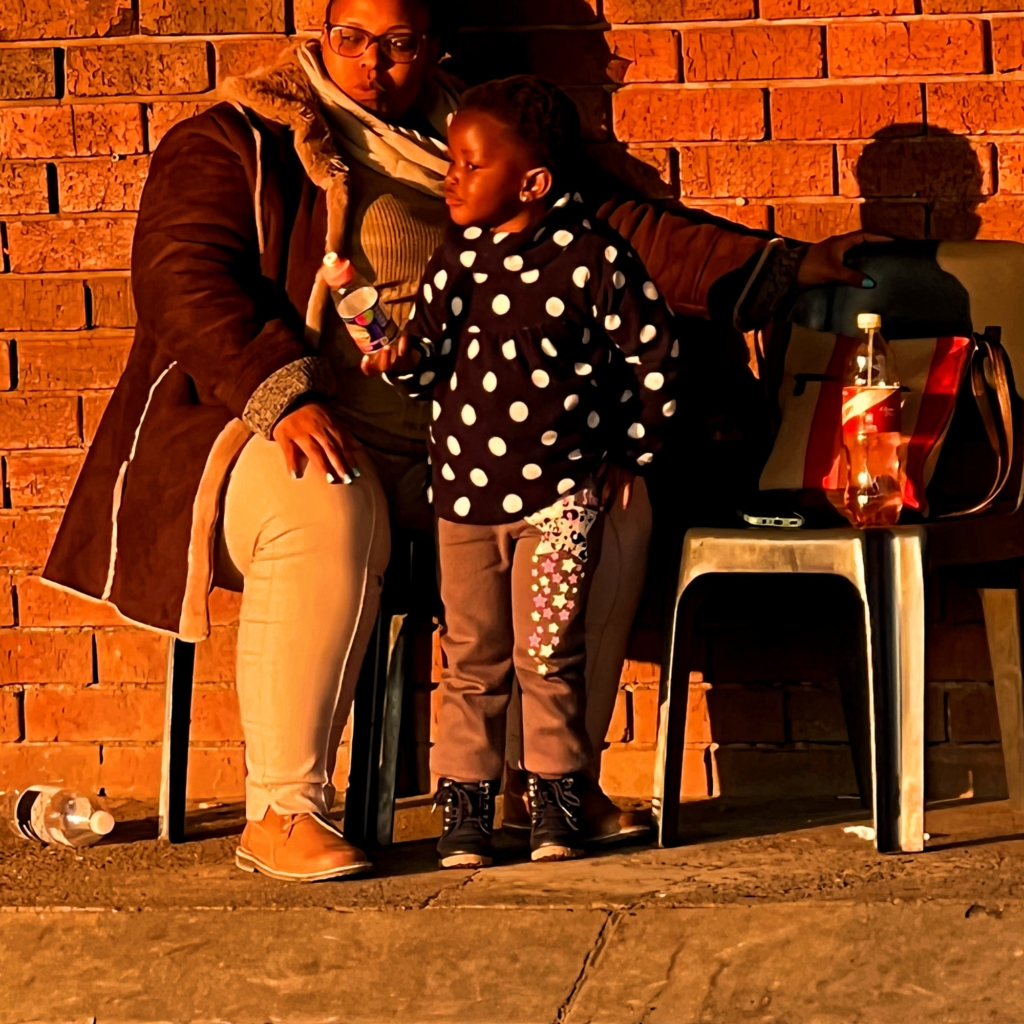
The car wash was the most thorough I ever had, wiping down every surface you can imagine. There were ten people working on six cars each hour. I was surprised at our cost, only US$3.60. Wages must be very low here.
Final Thoughts
We got a good impression and understanding of Eswatini and Lesotho, our two main destinations for this part of the road trip. However, we only saw parts of these countries and missed major attractions.
One thing, in particular, I really want to do is the donkey pub crawl offered by Semonkong Lodge. Using this venerable pack animal, you can visit traditional beer-brewing homes, and local bars and enjoy local Basotho folk music and dancing.
This is just another of the many reasons Khadija and I have to go back!

